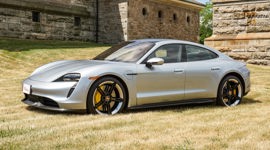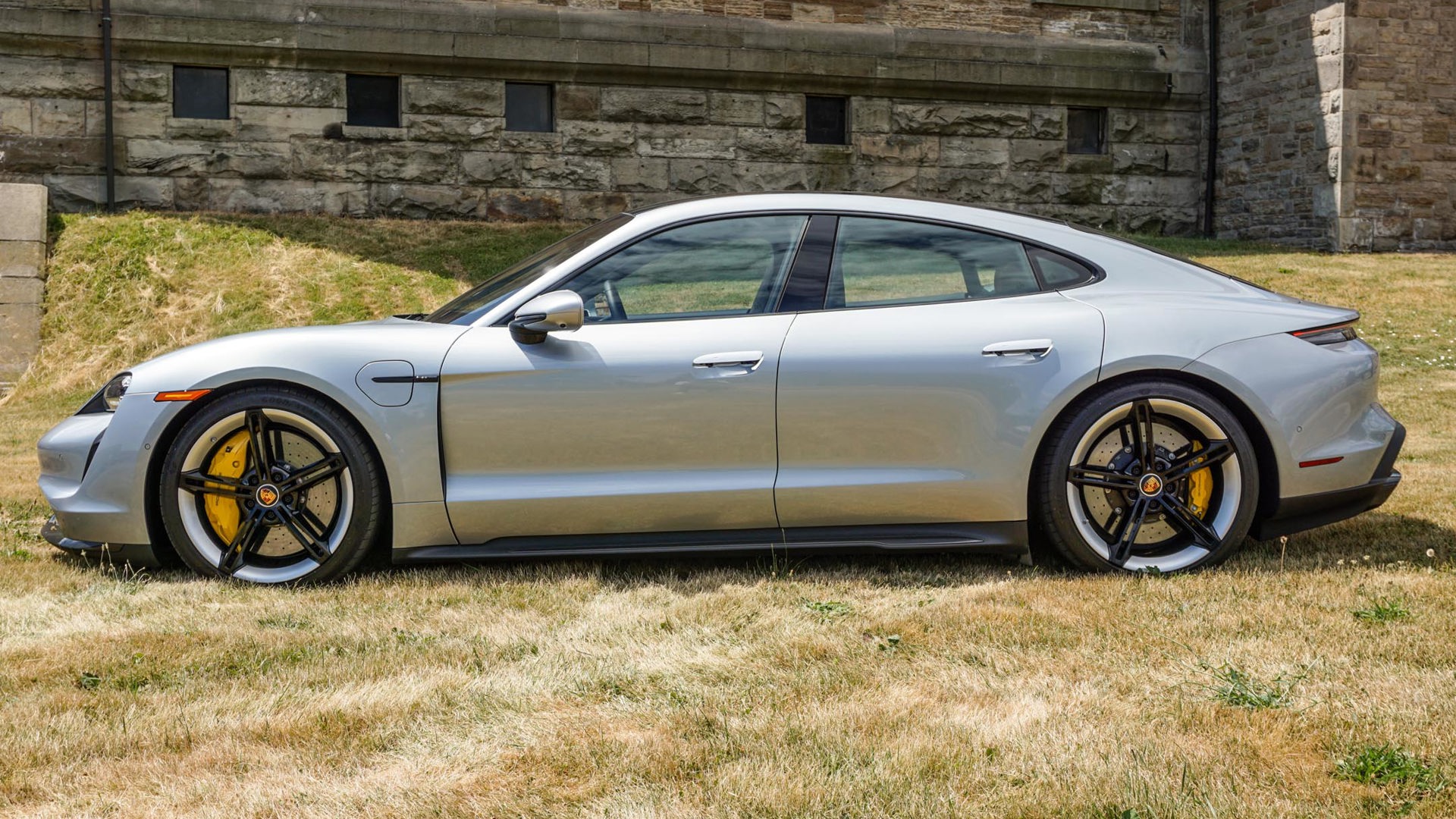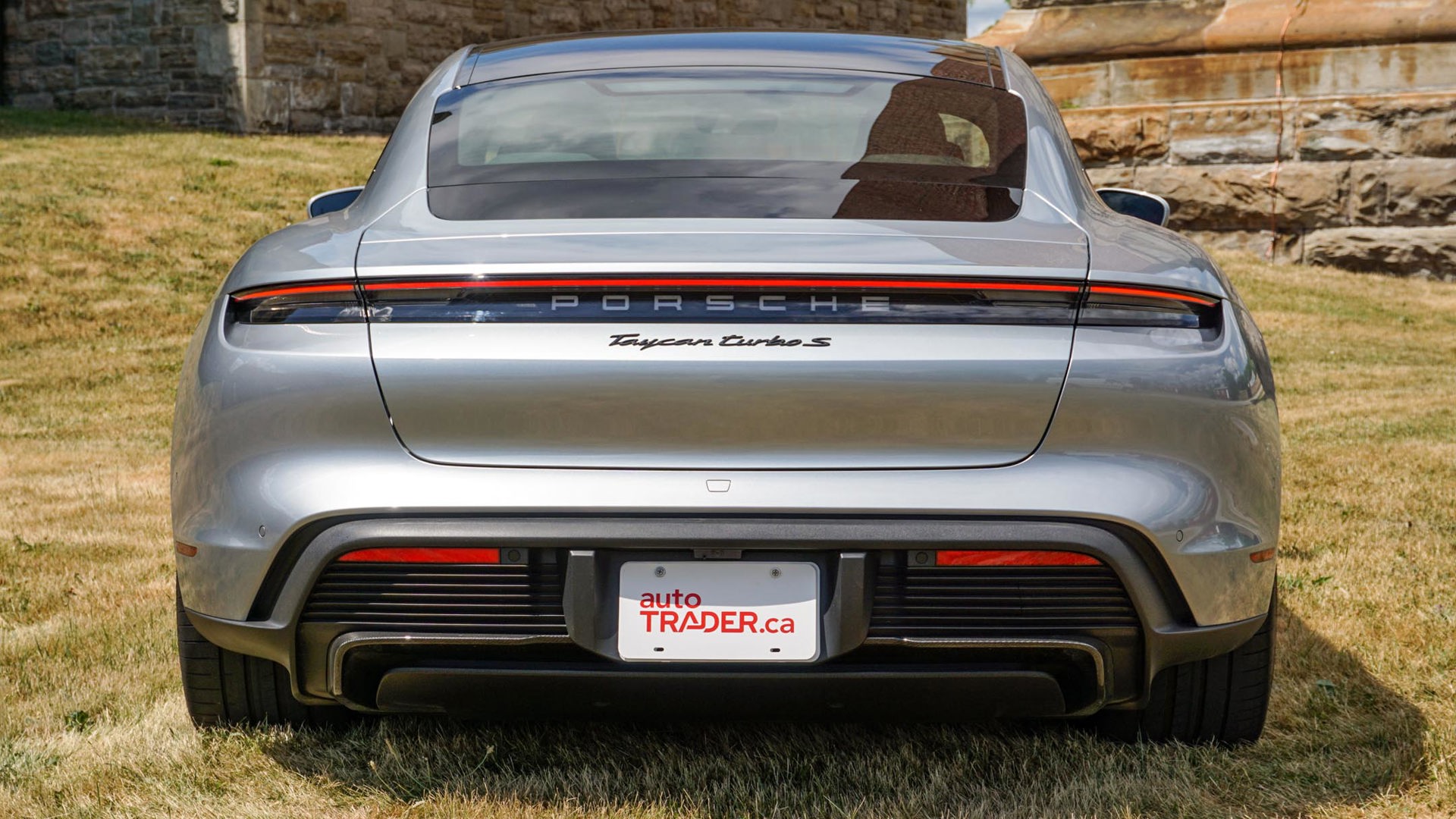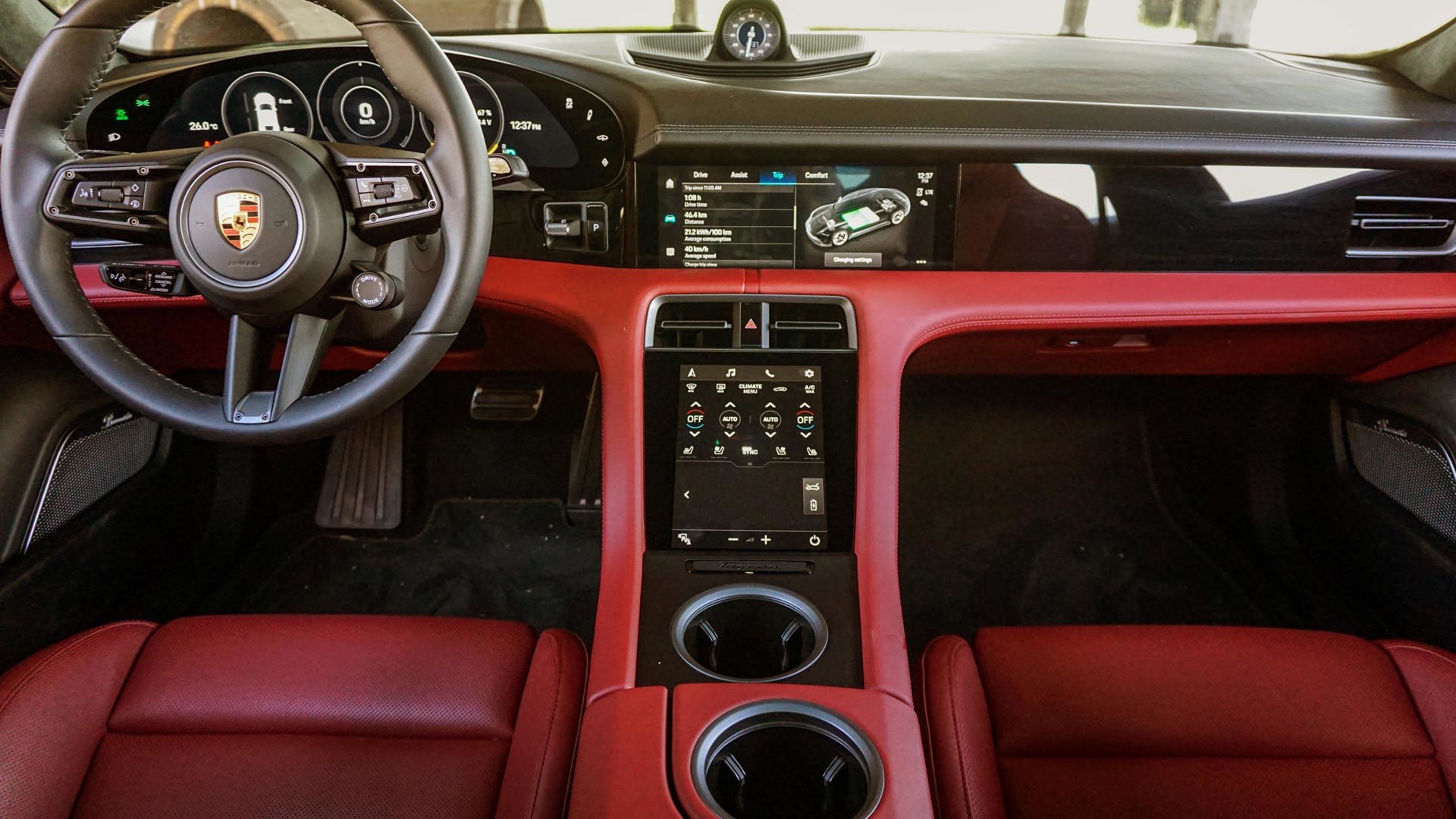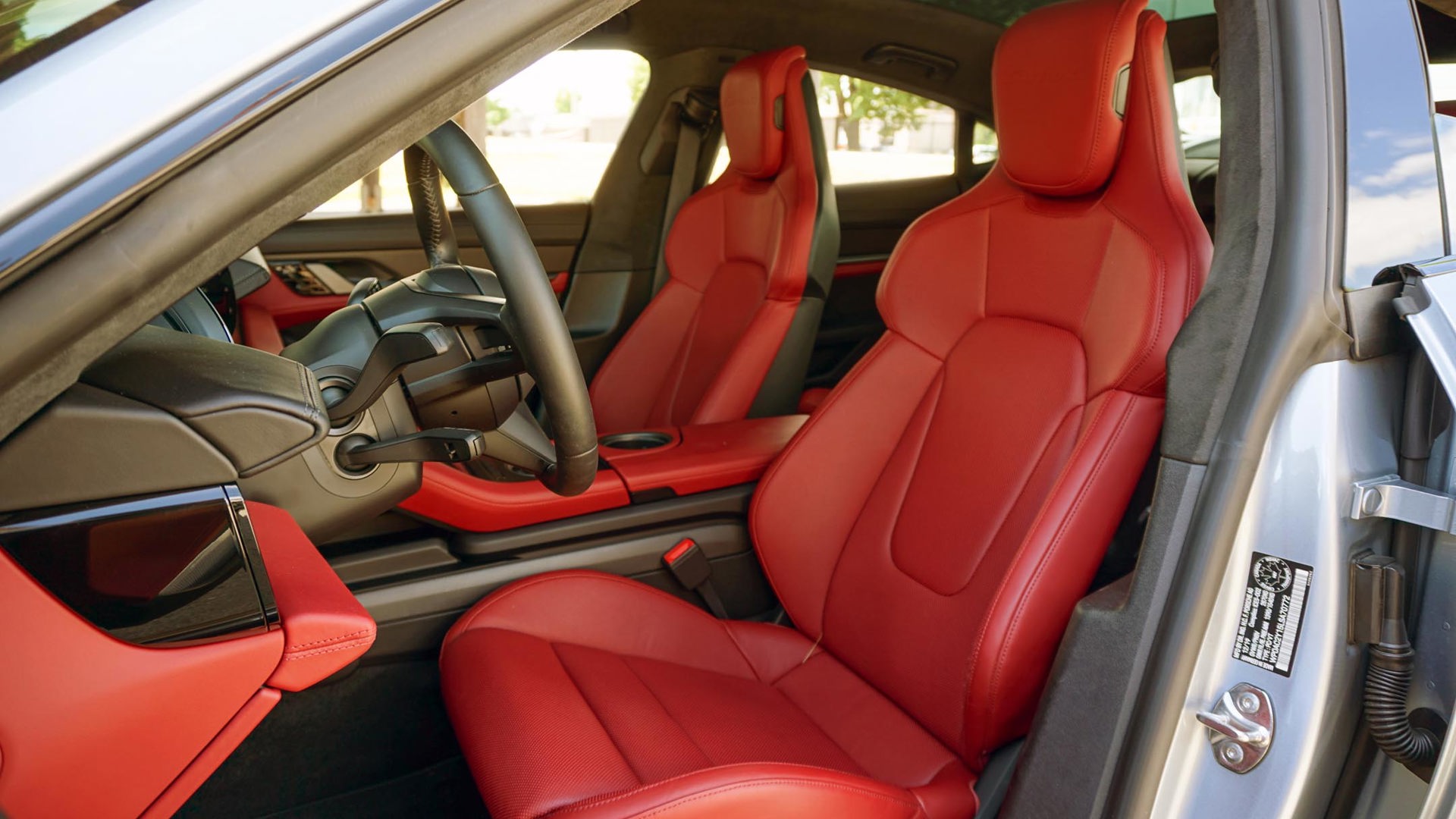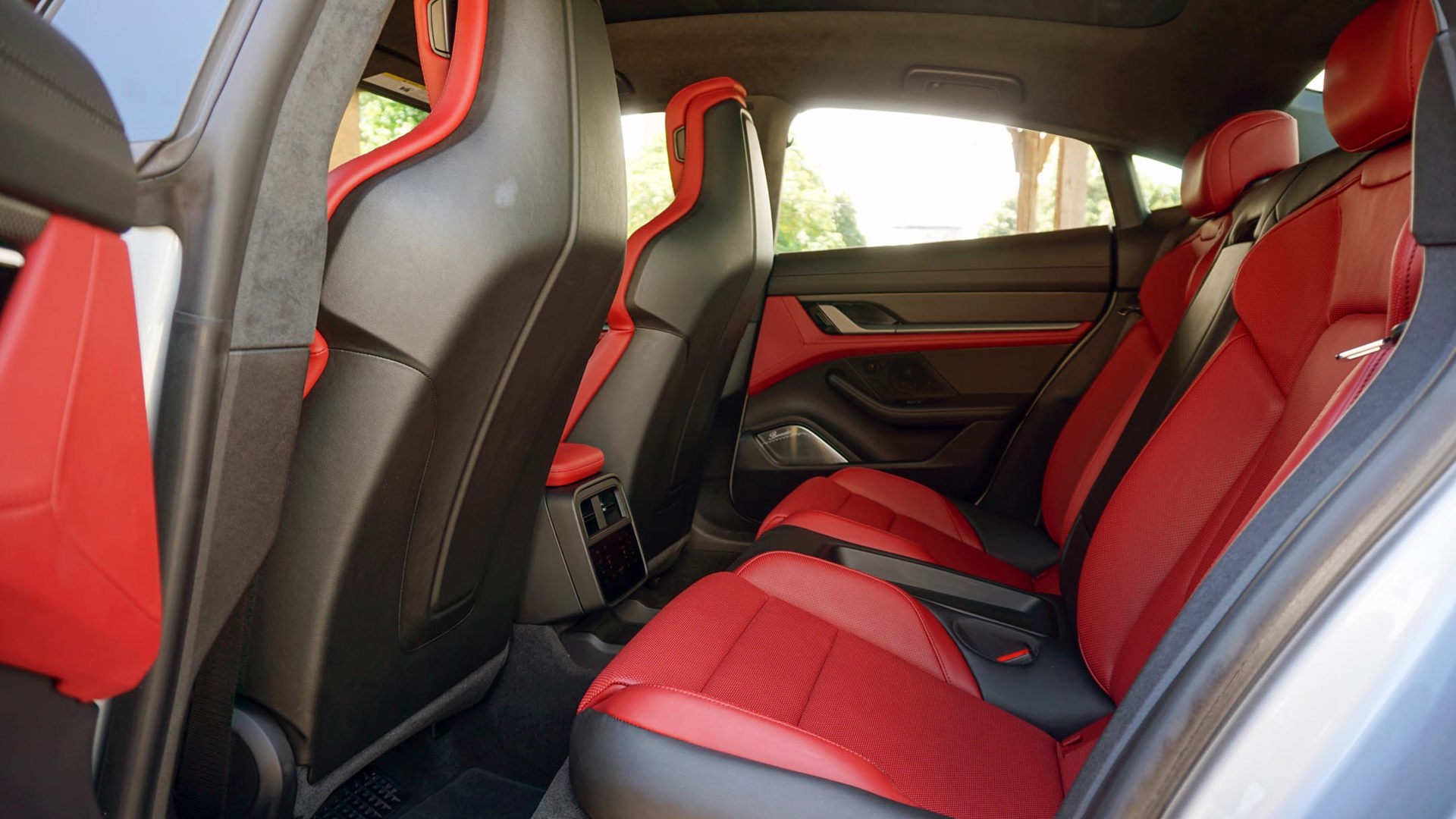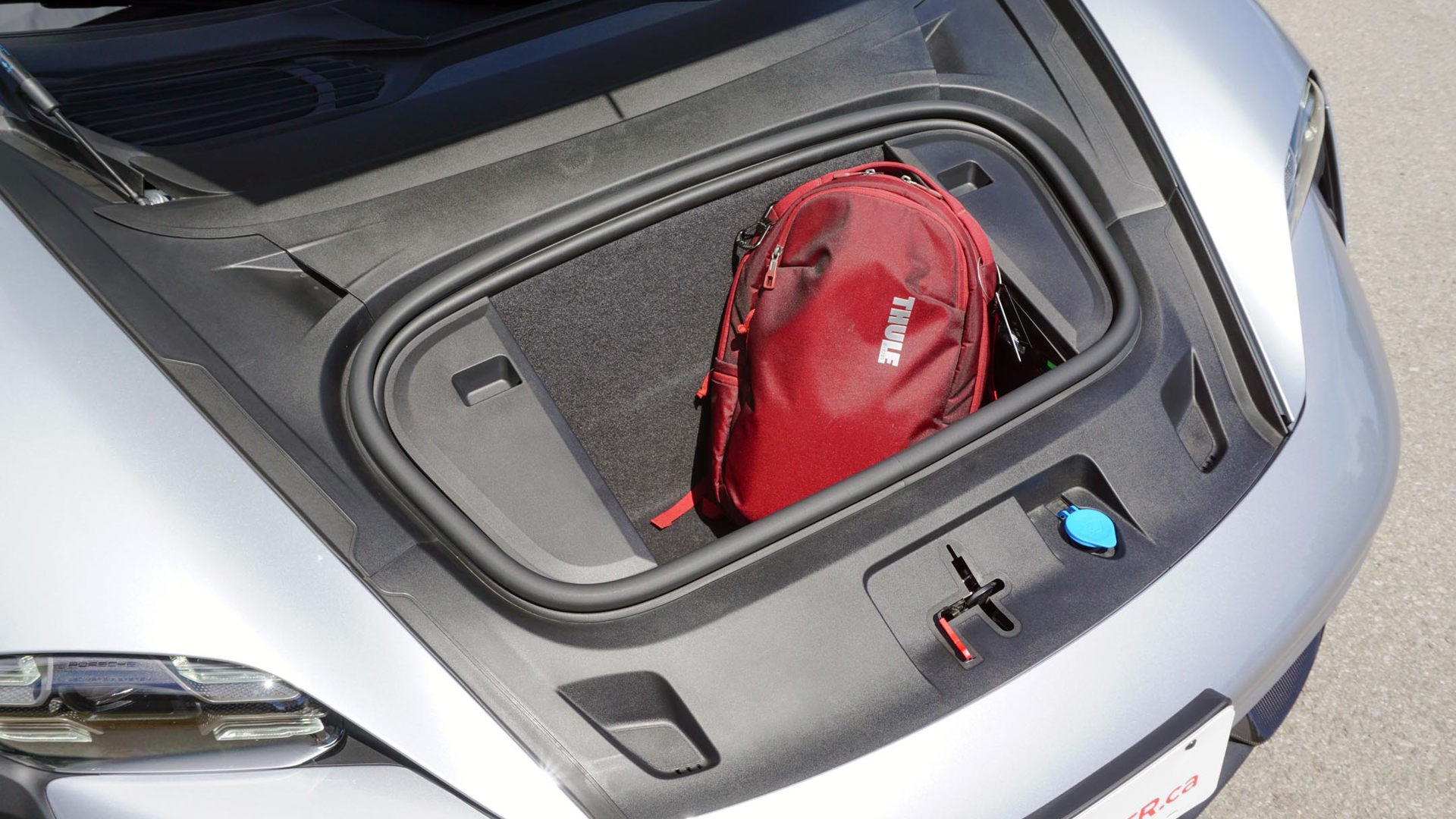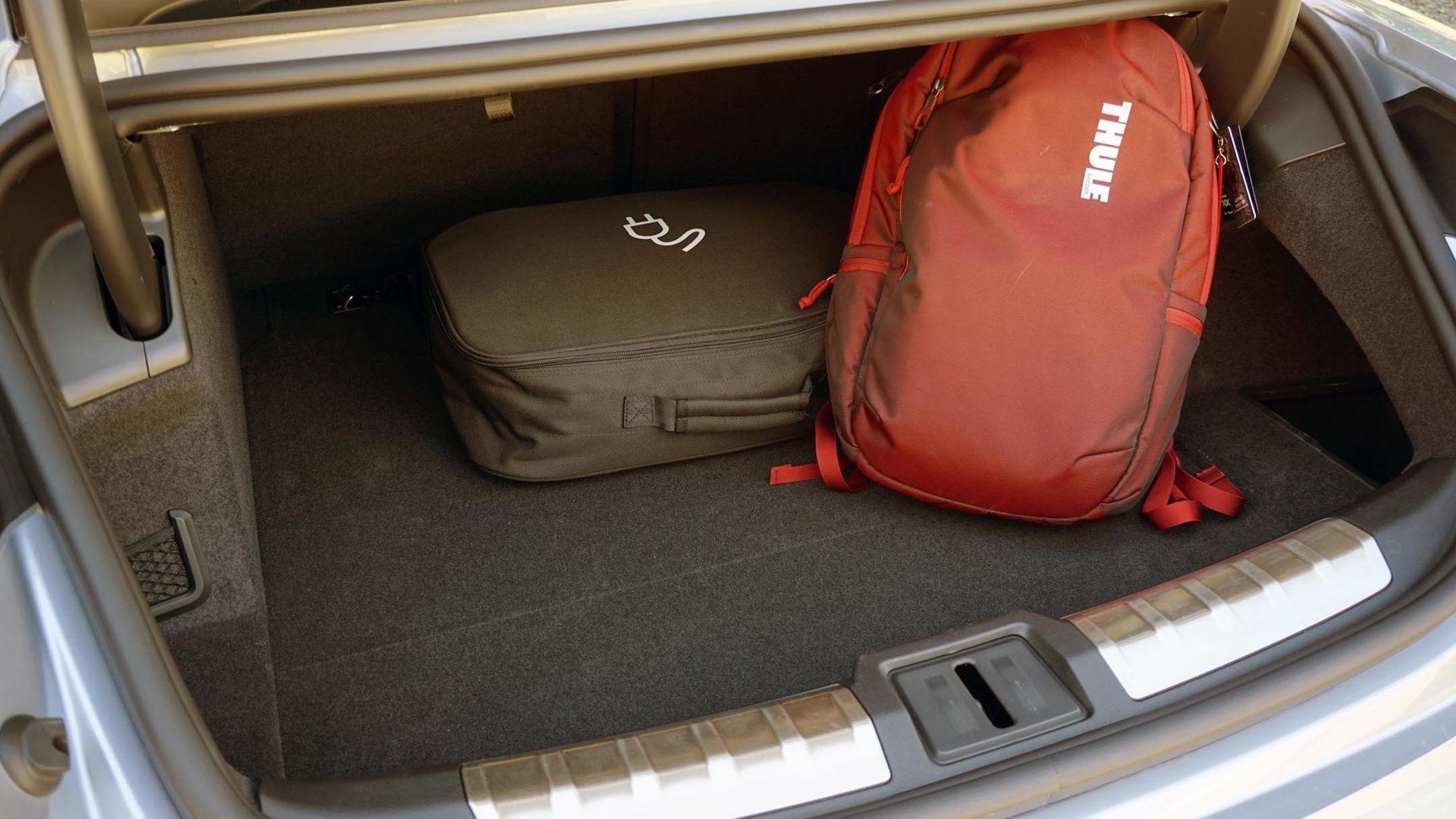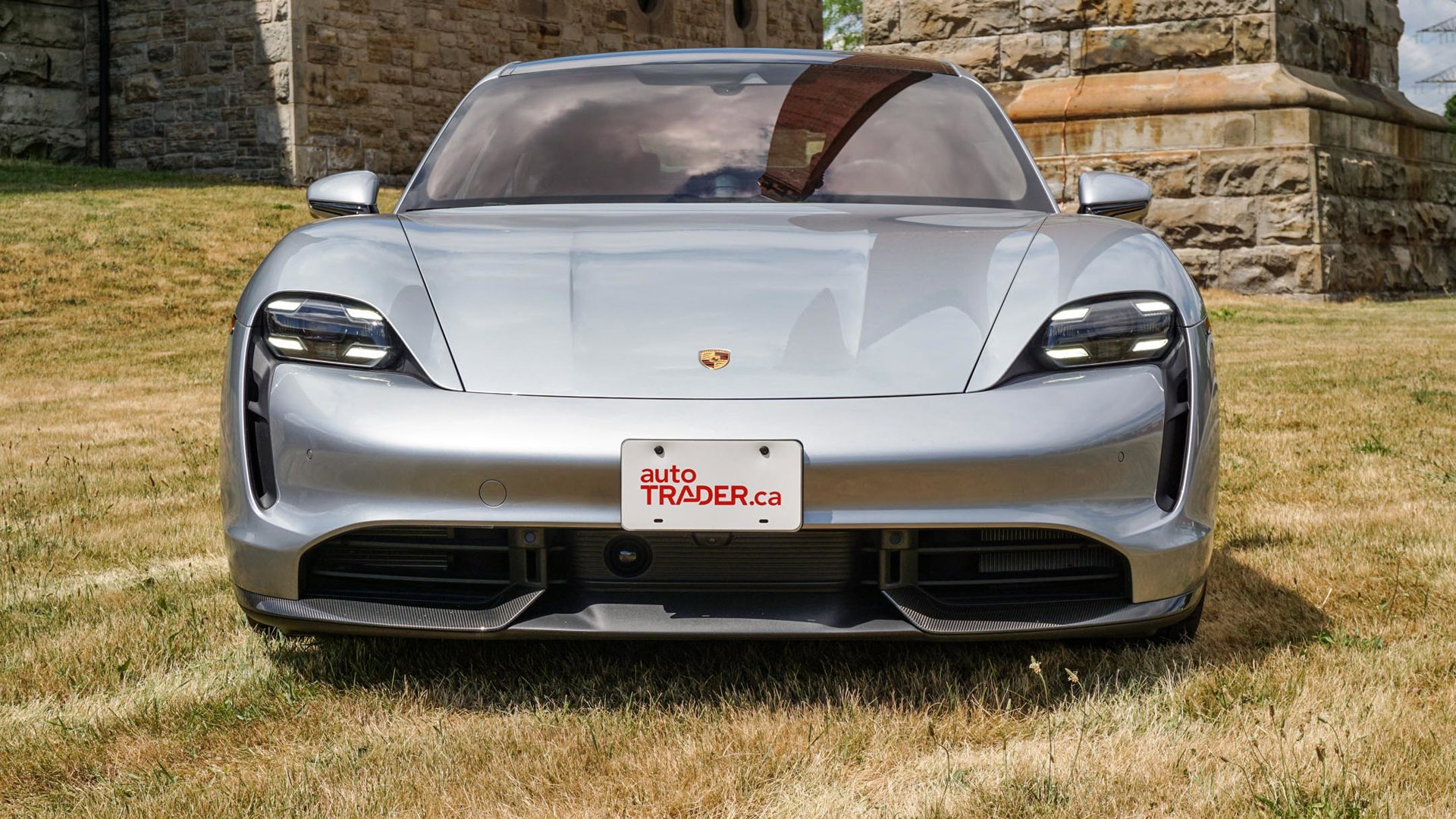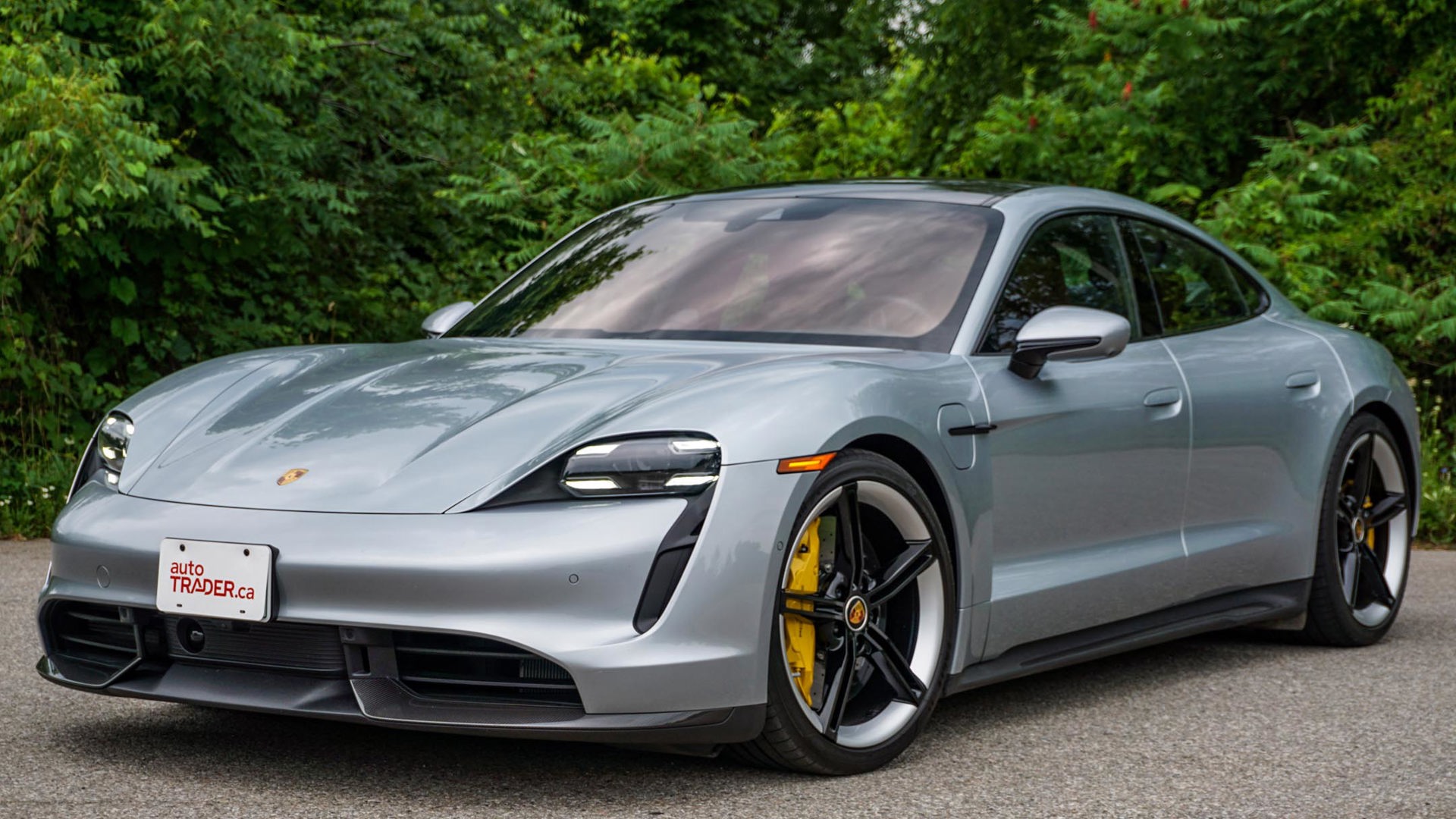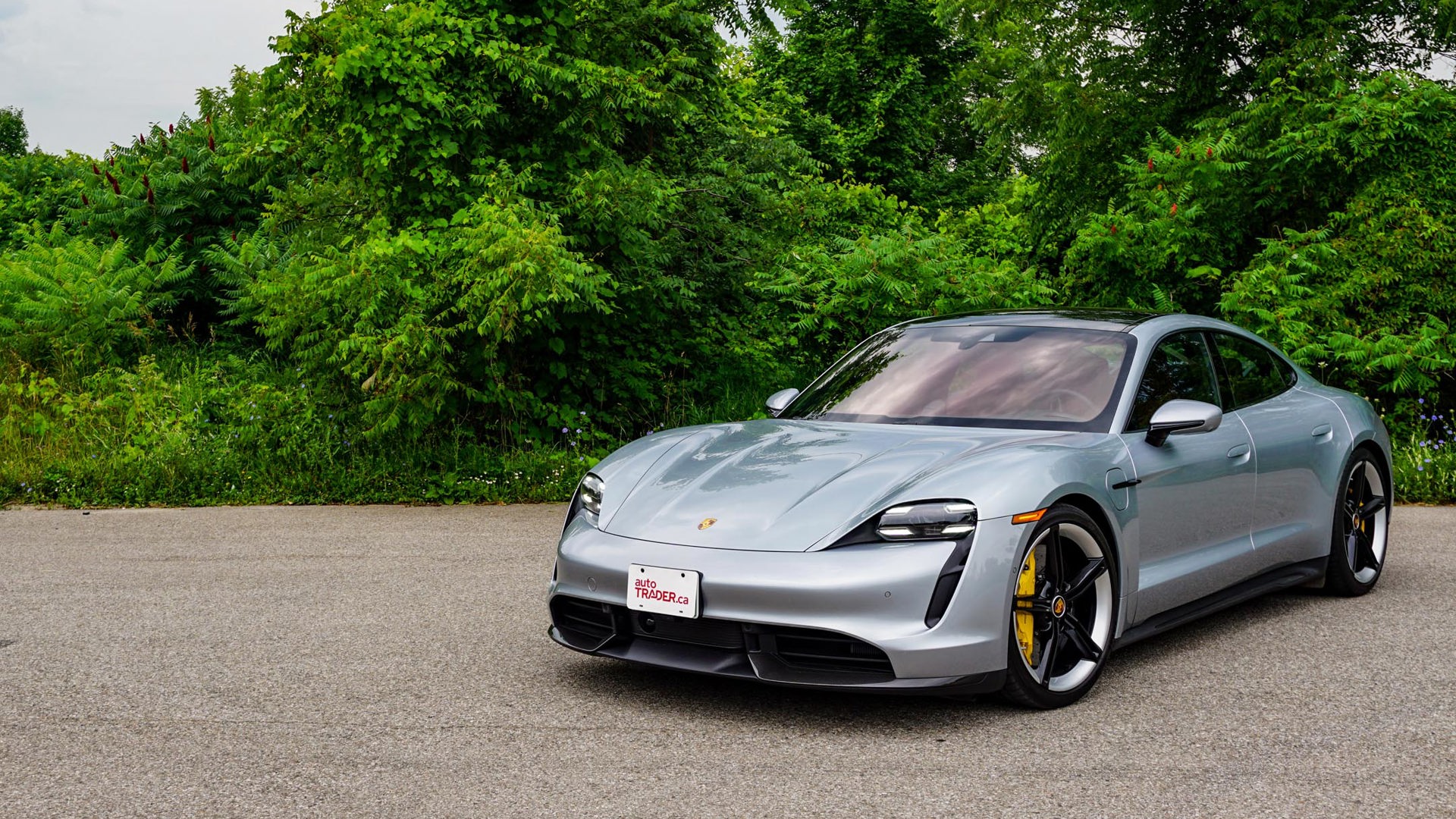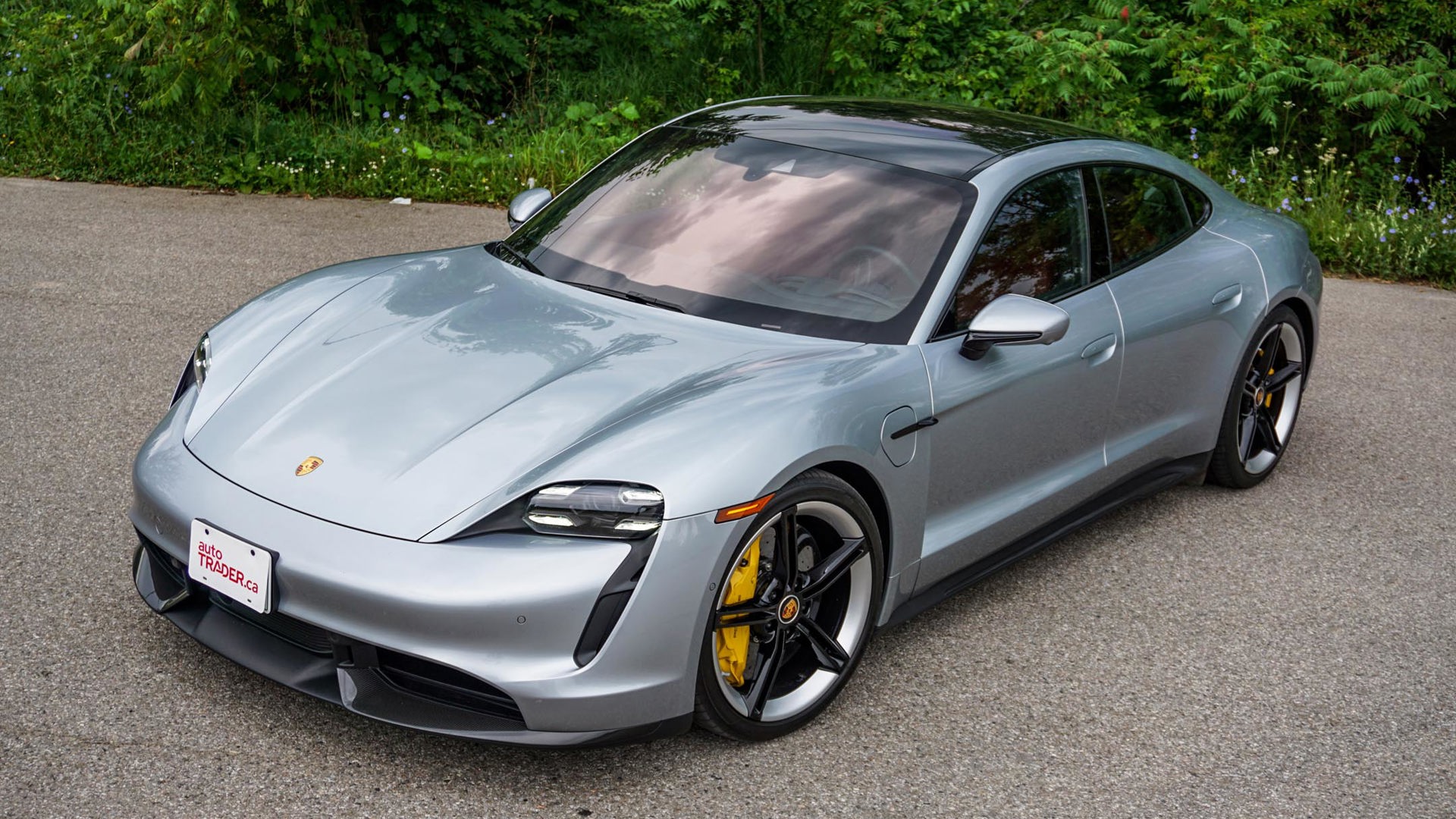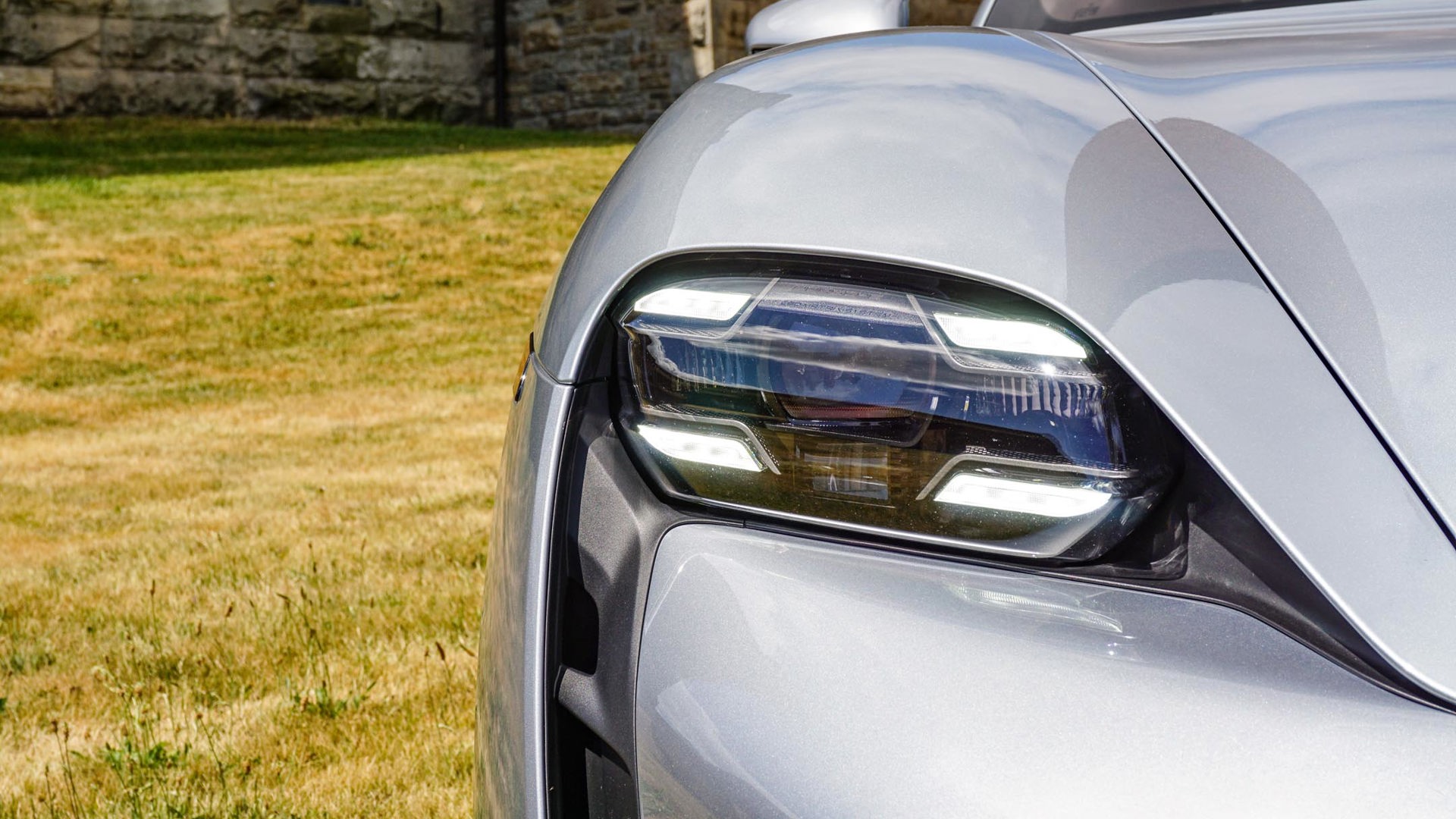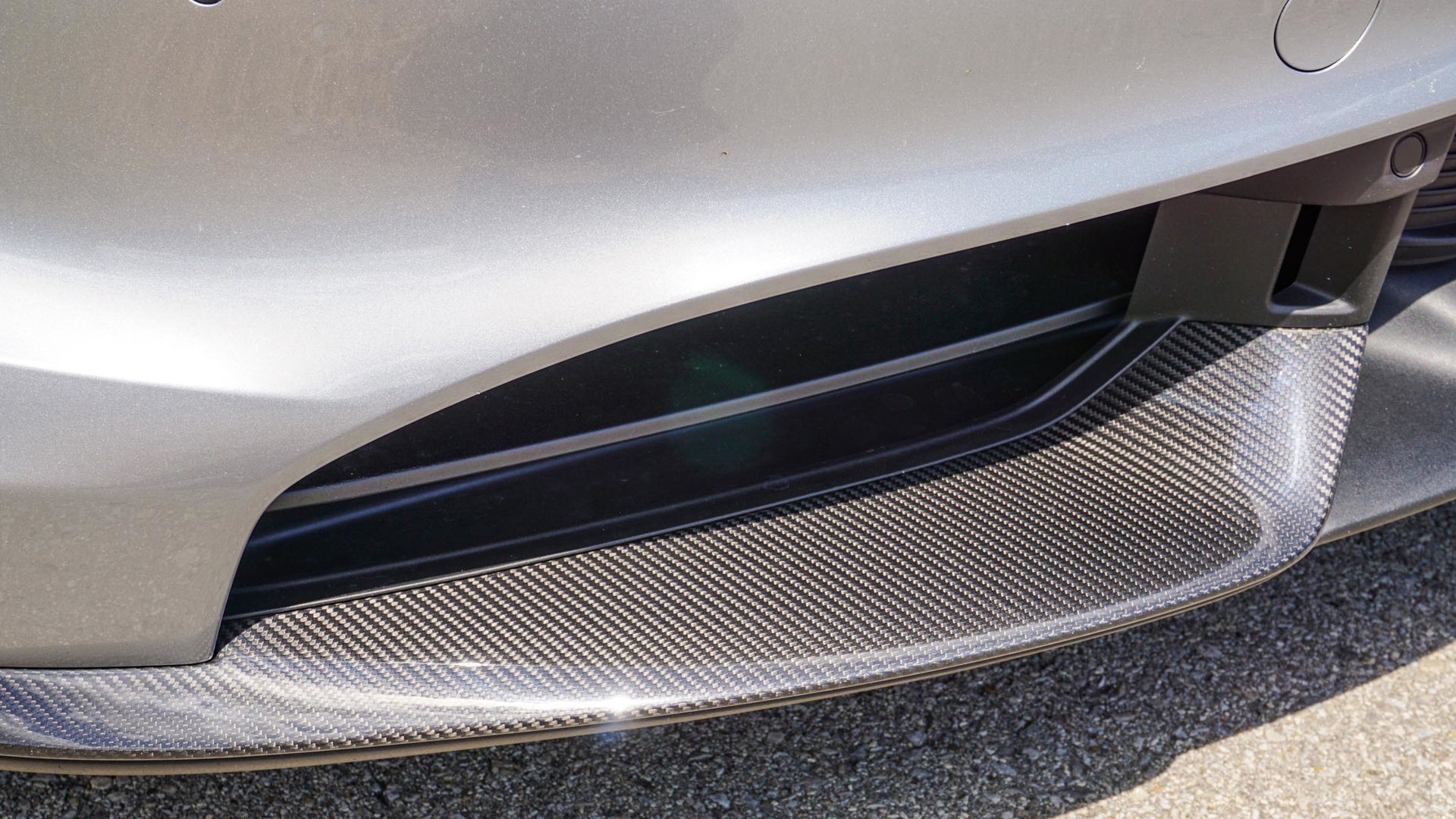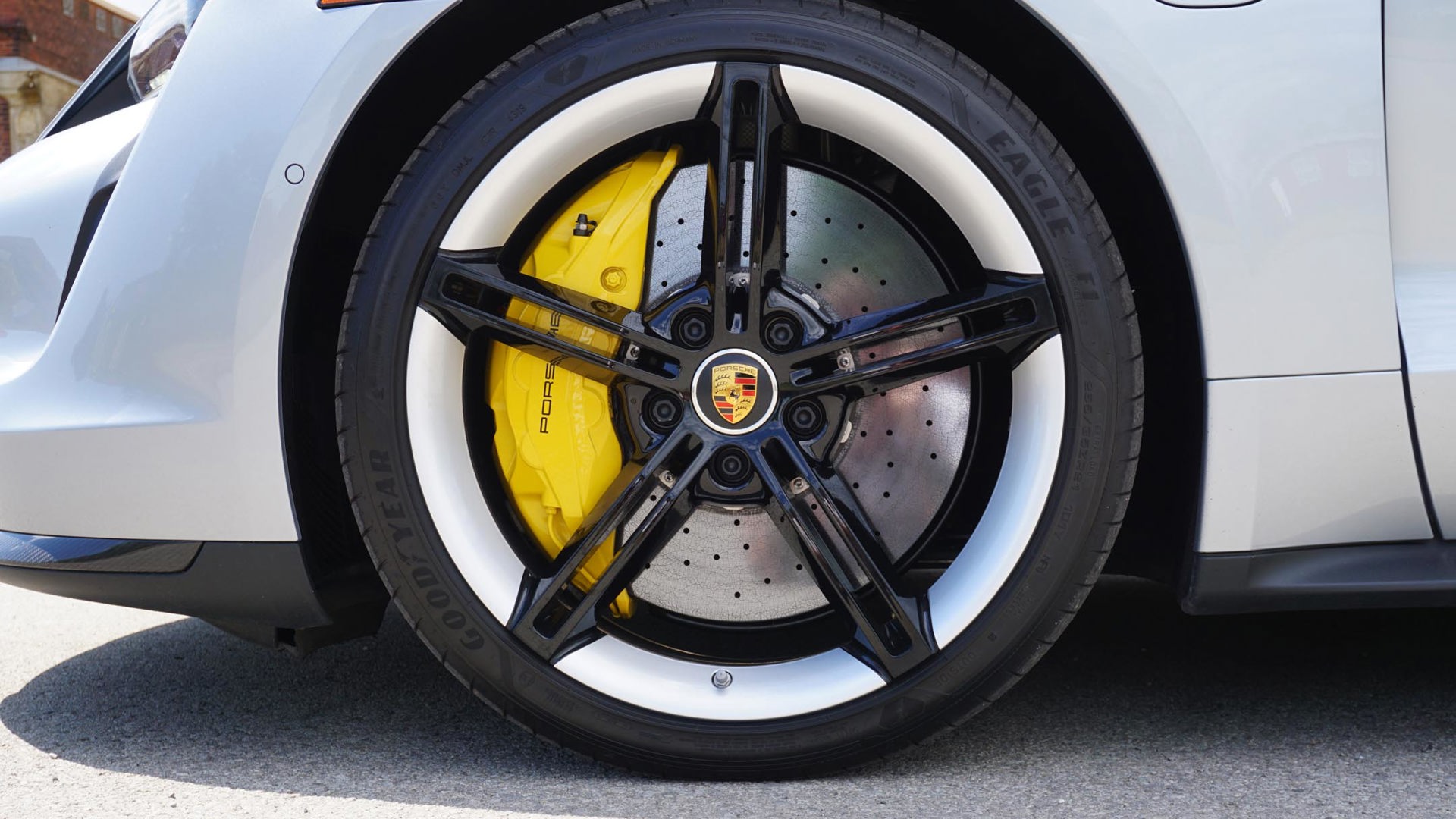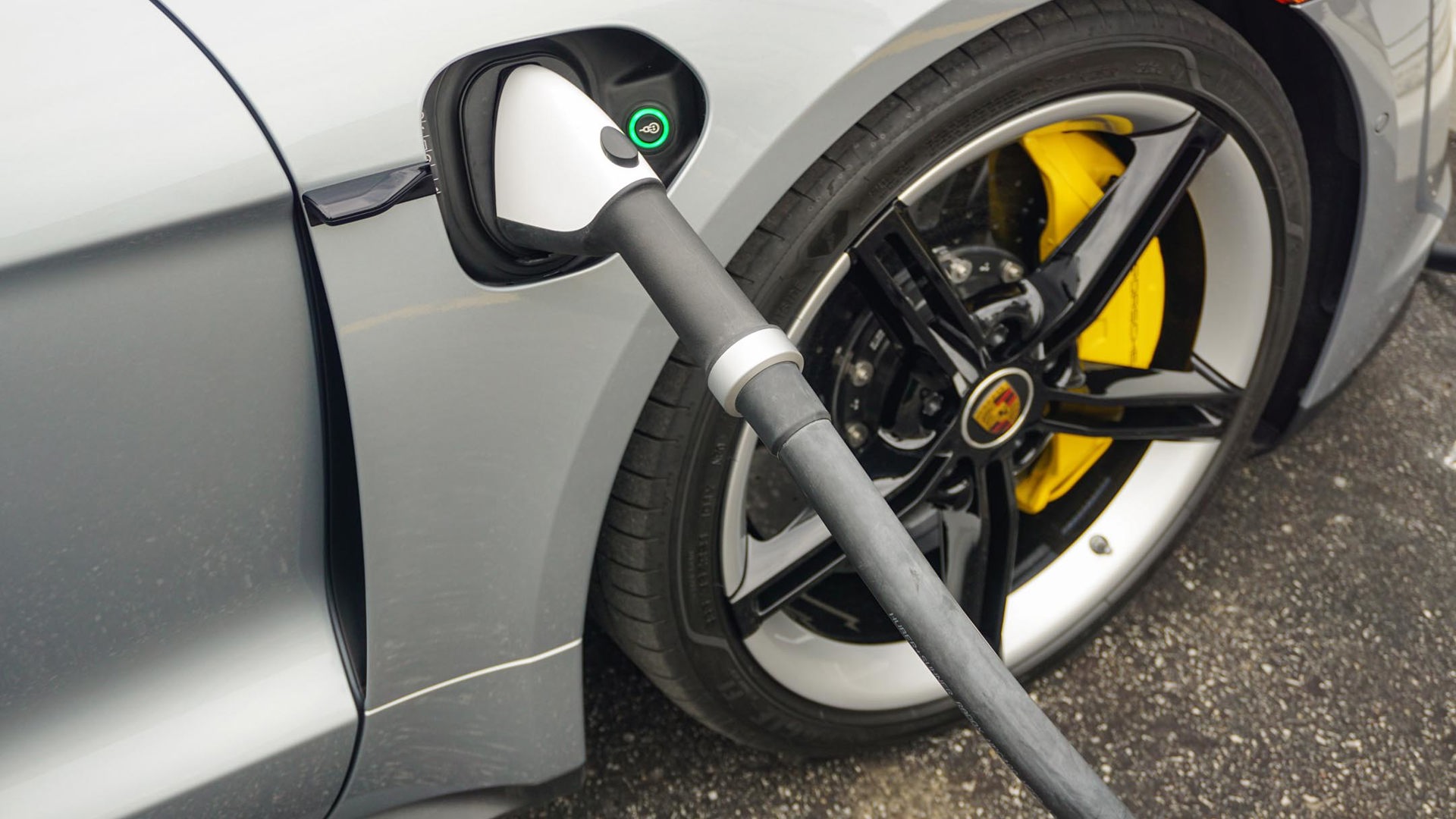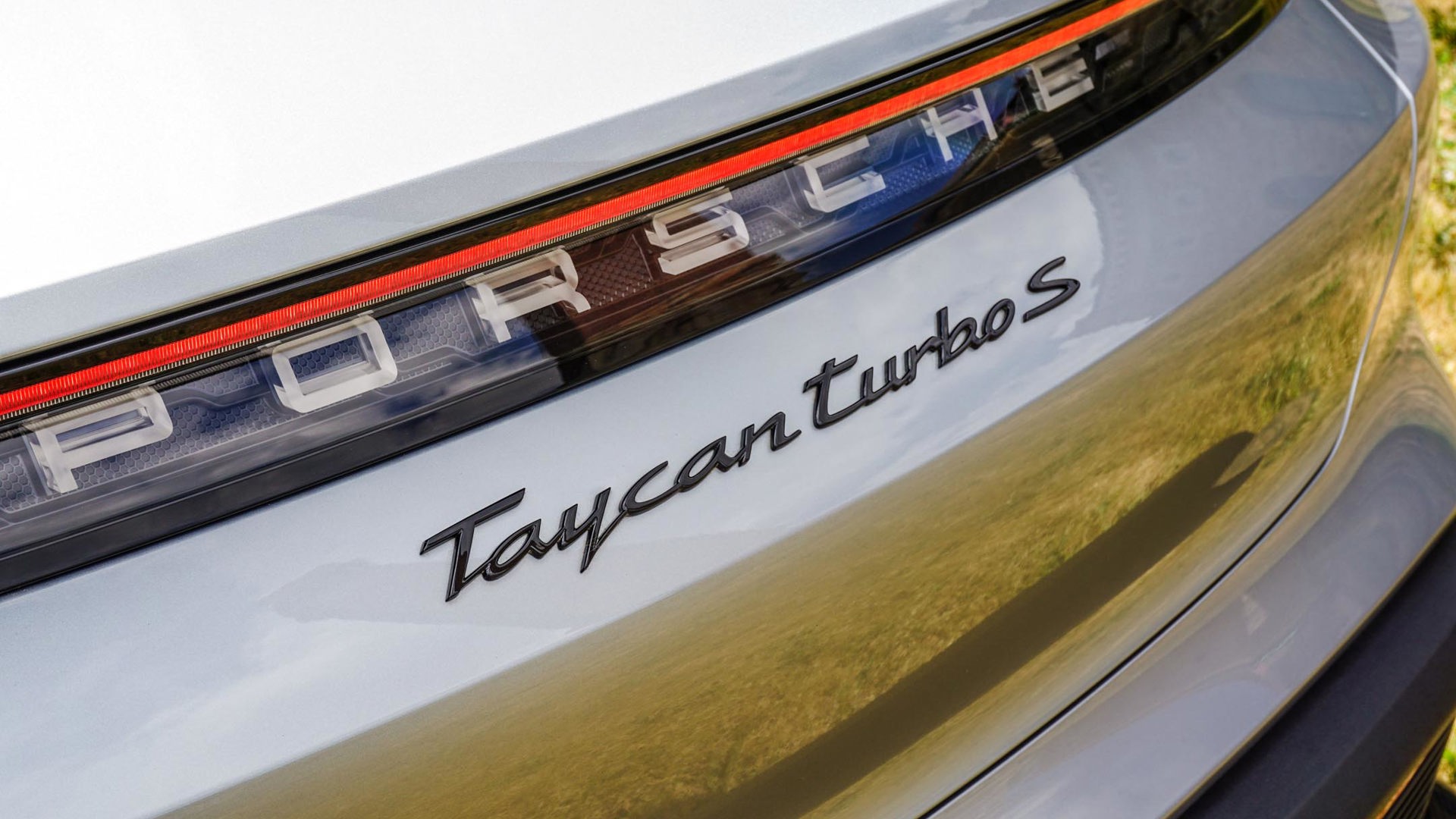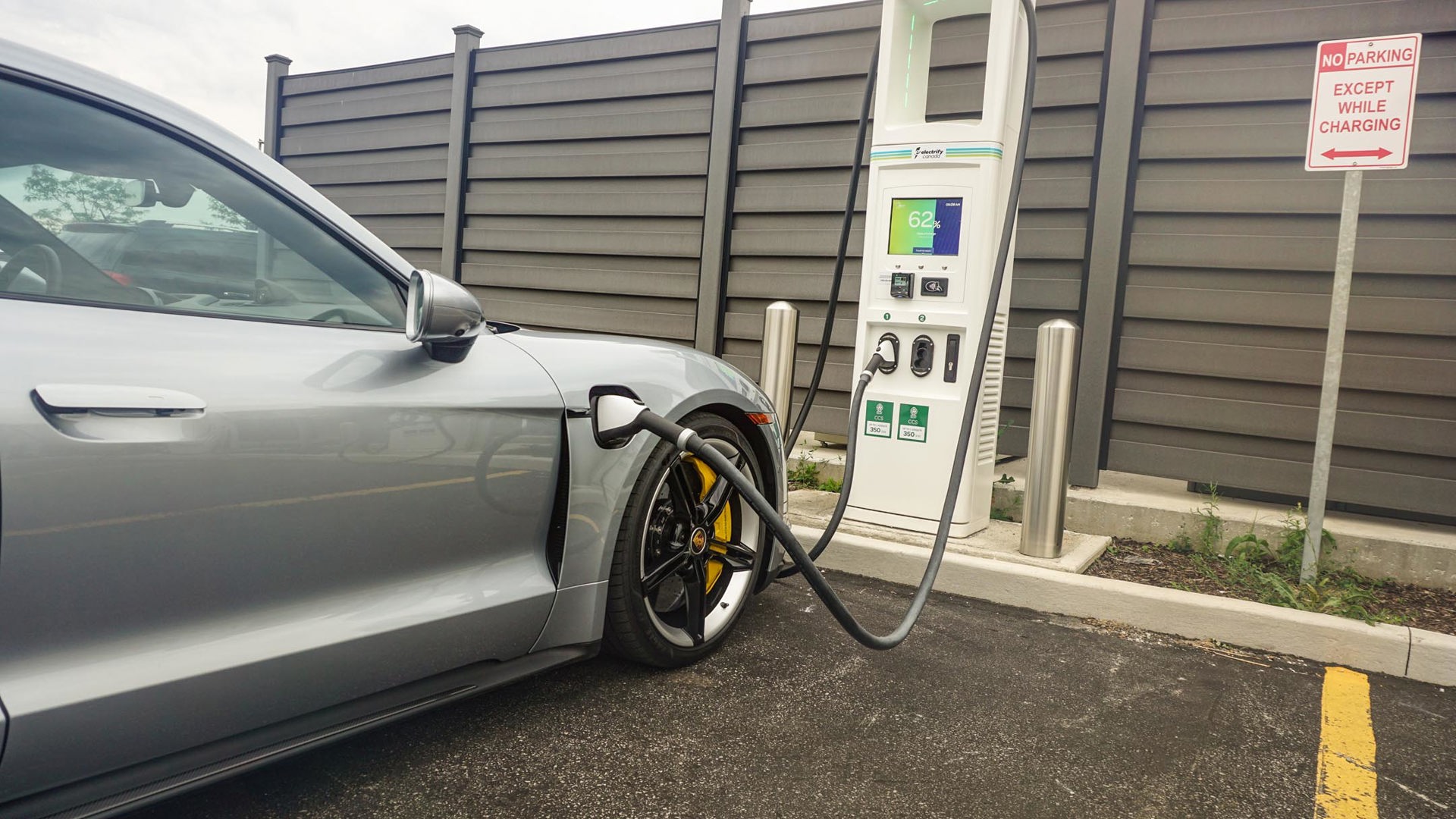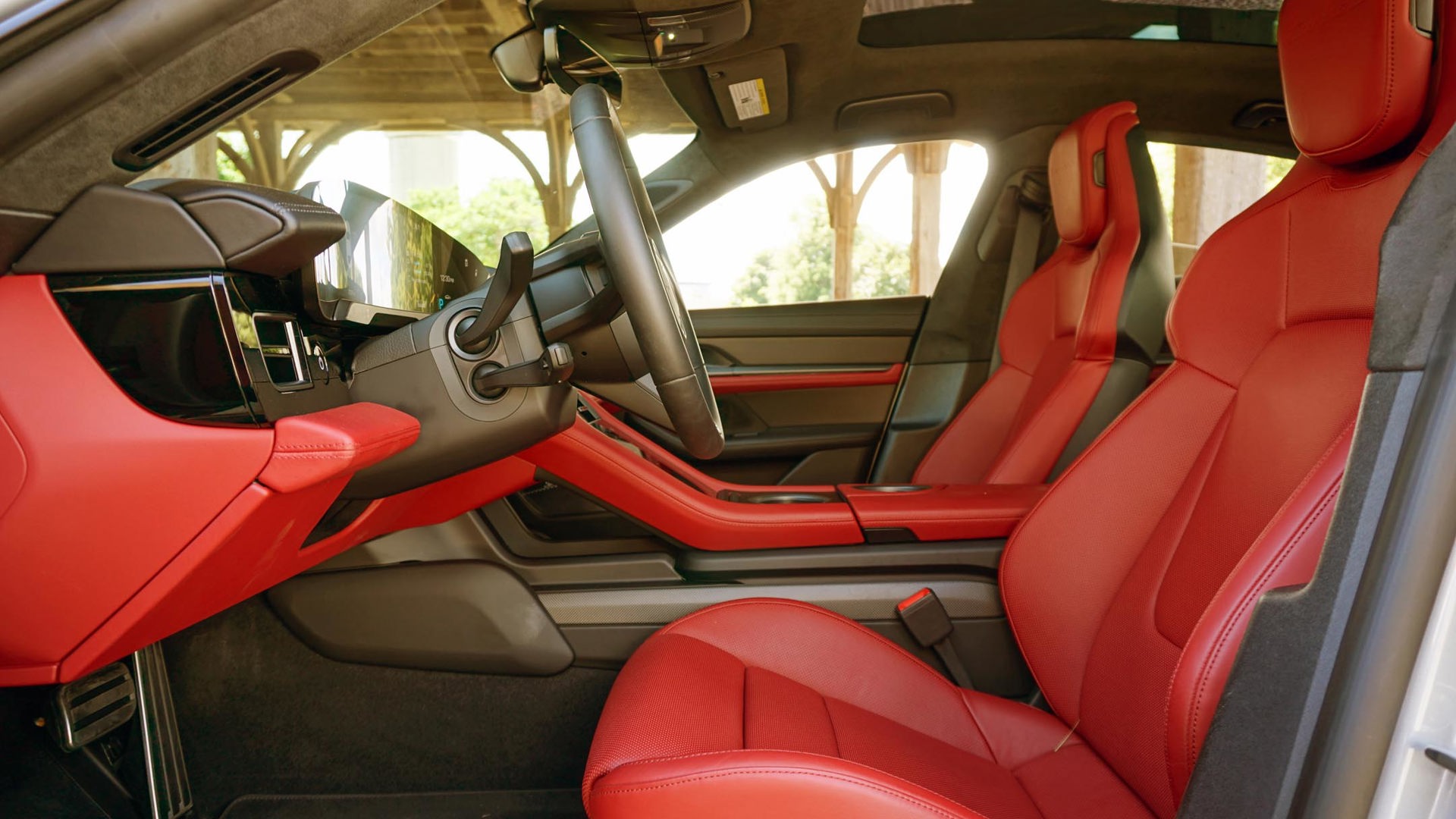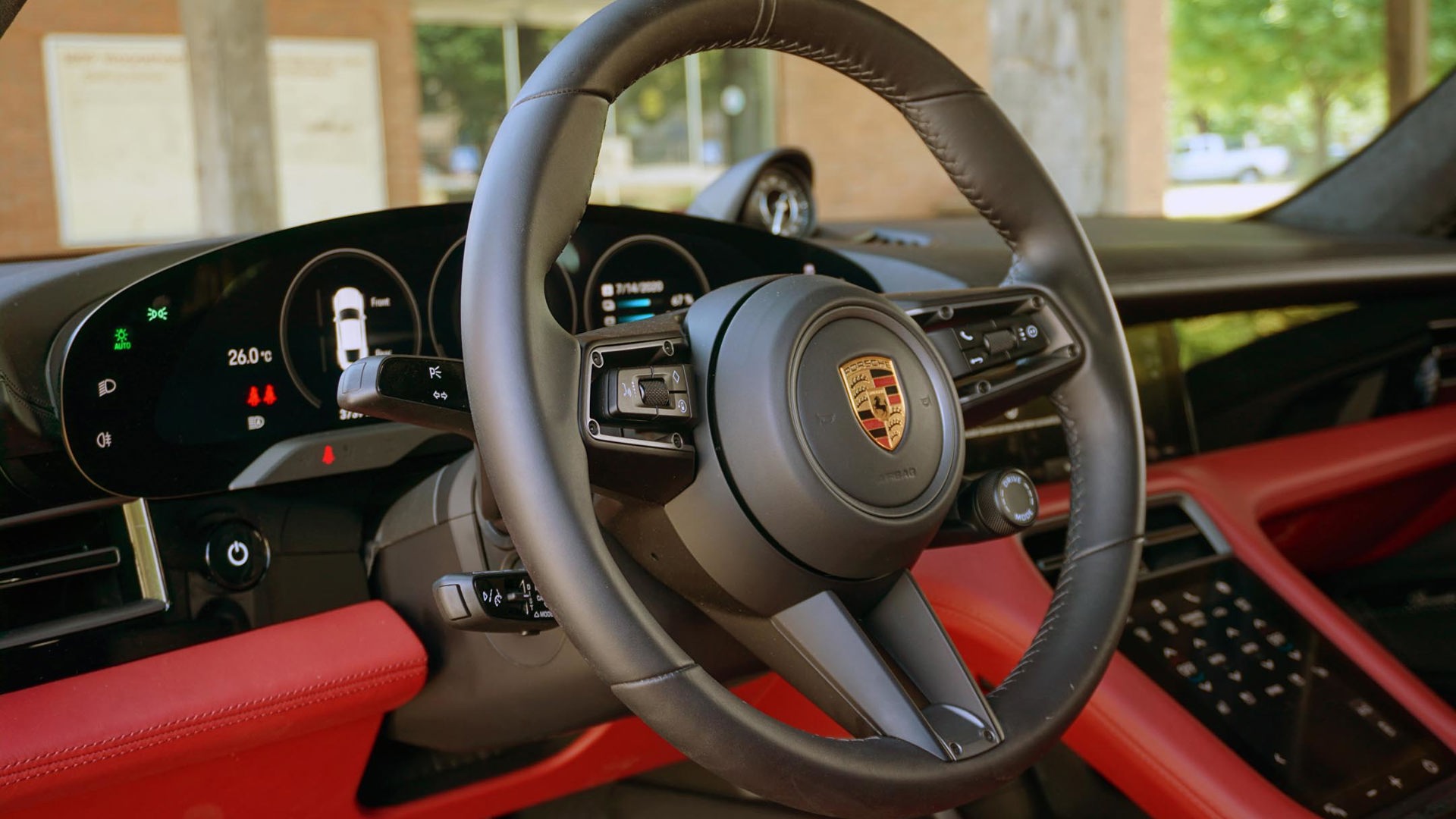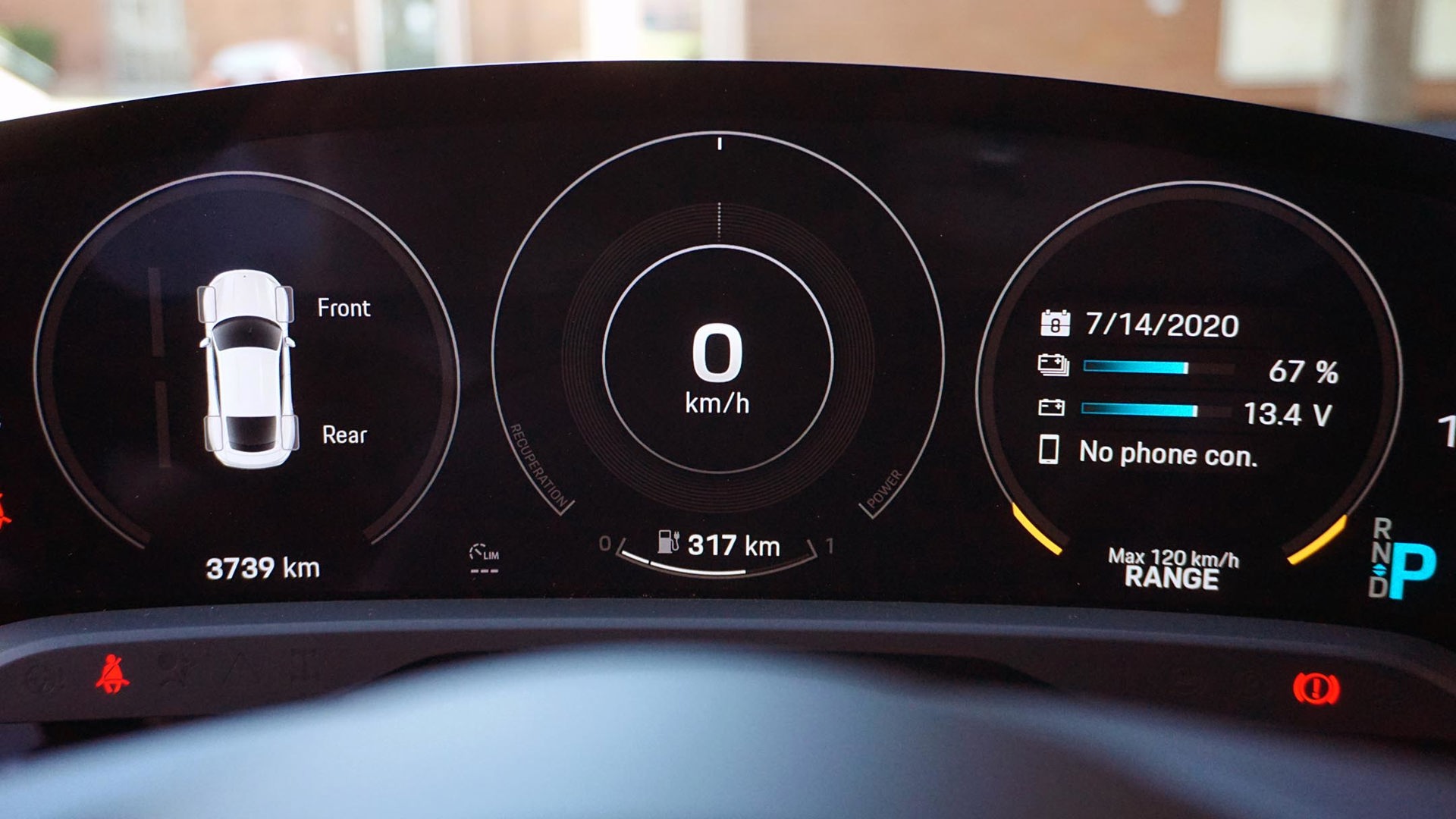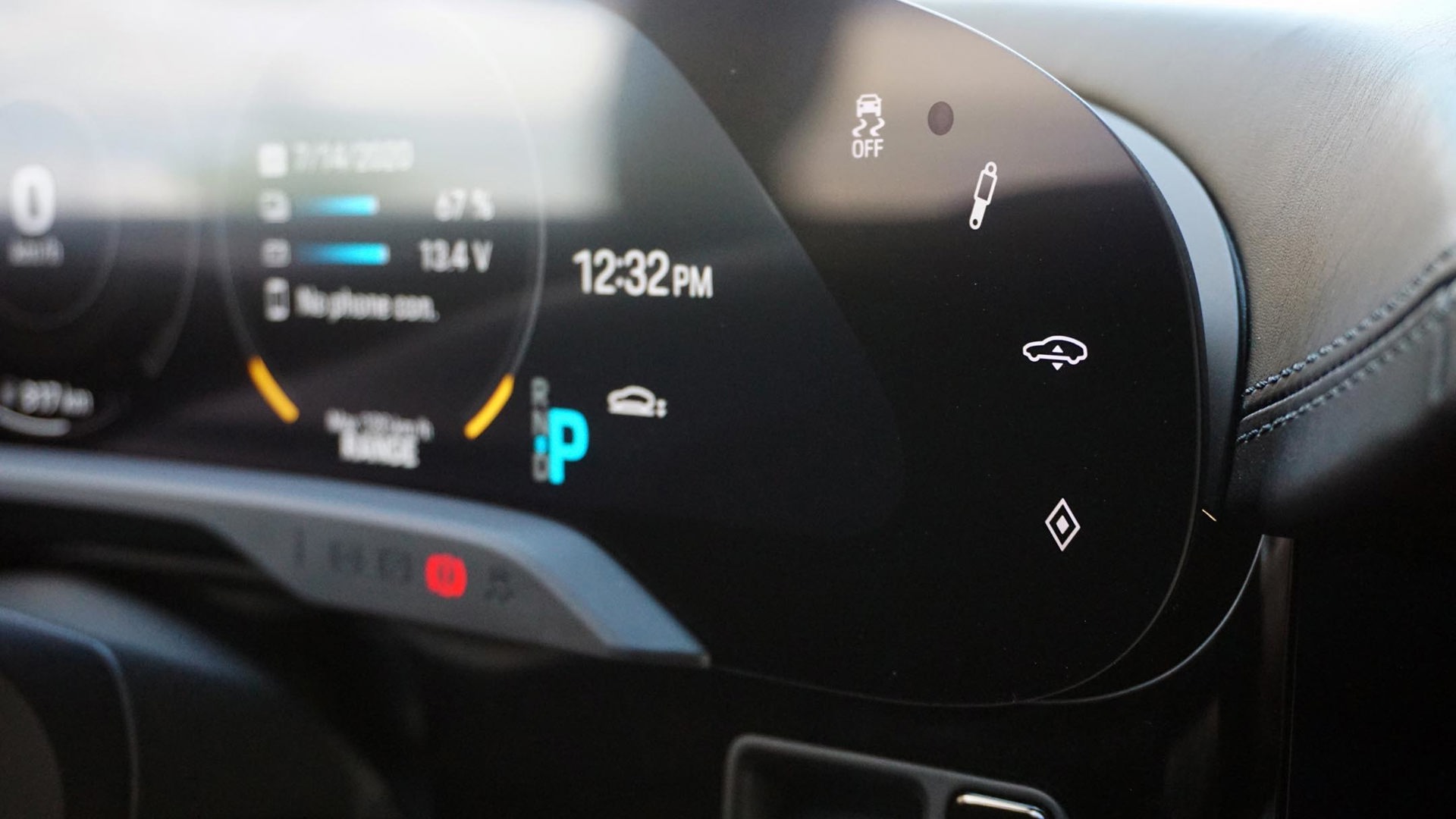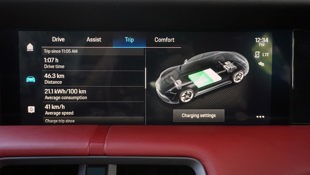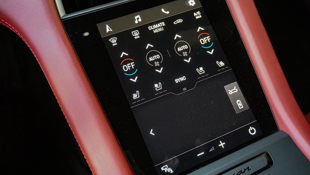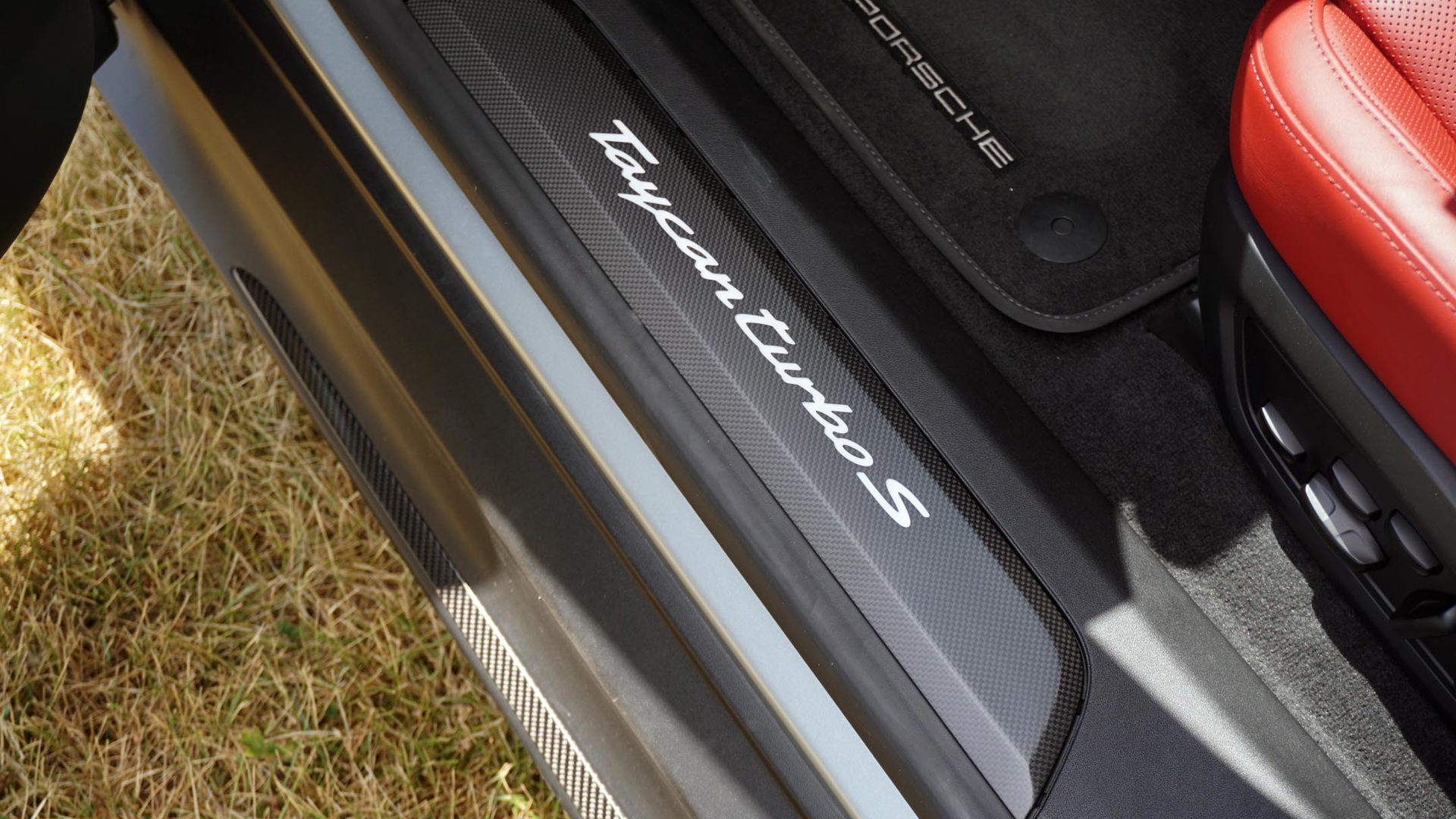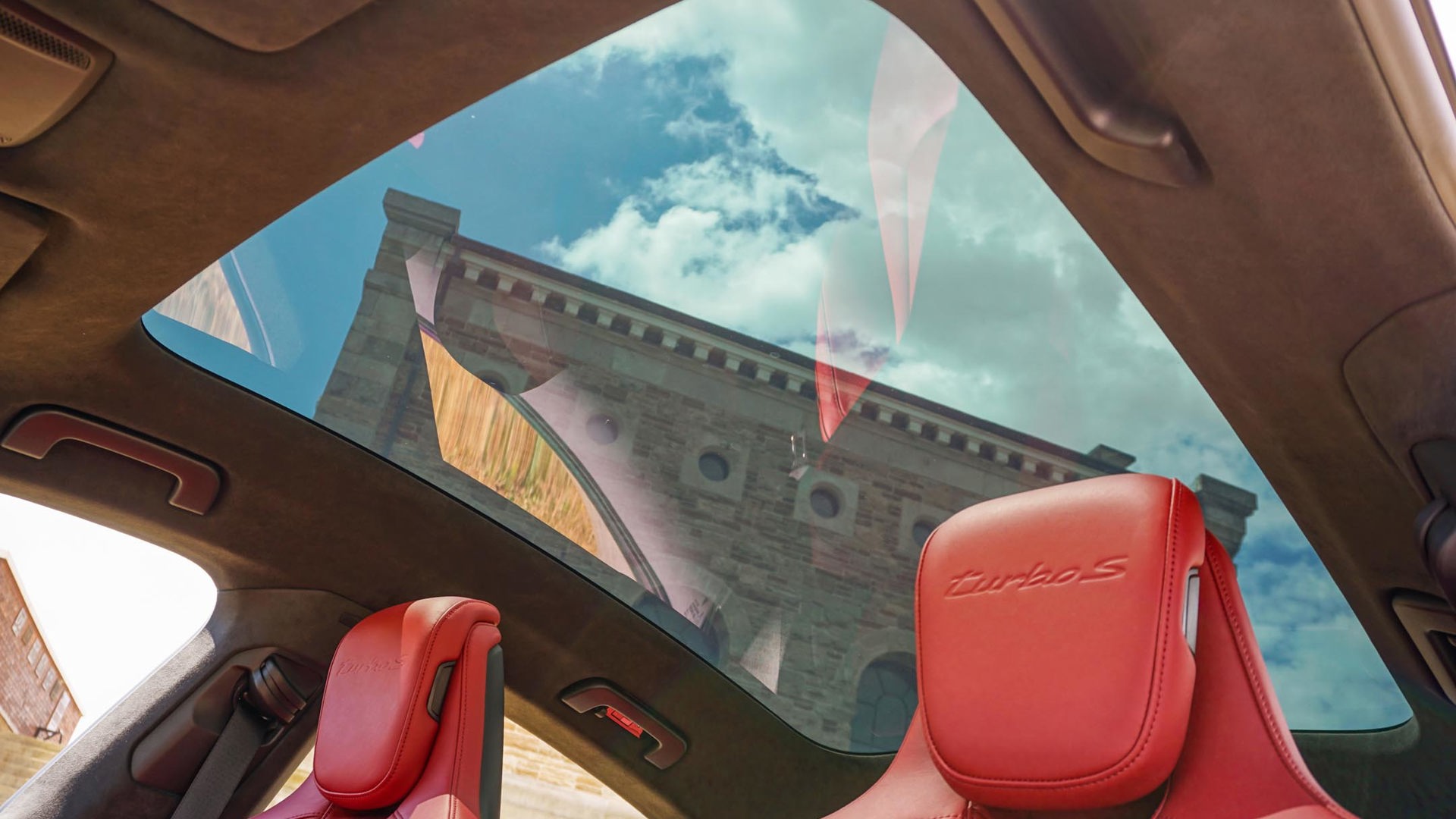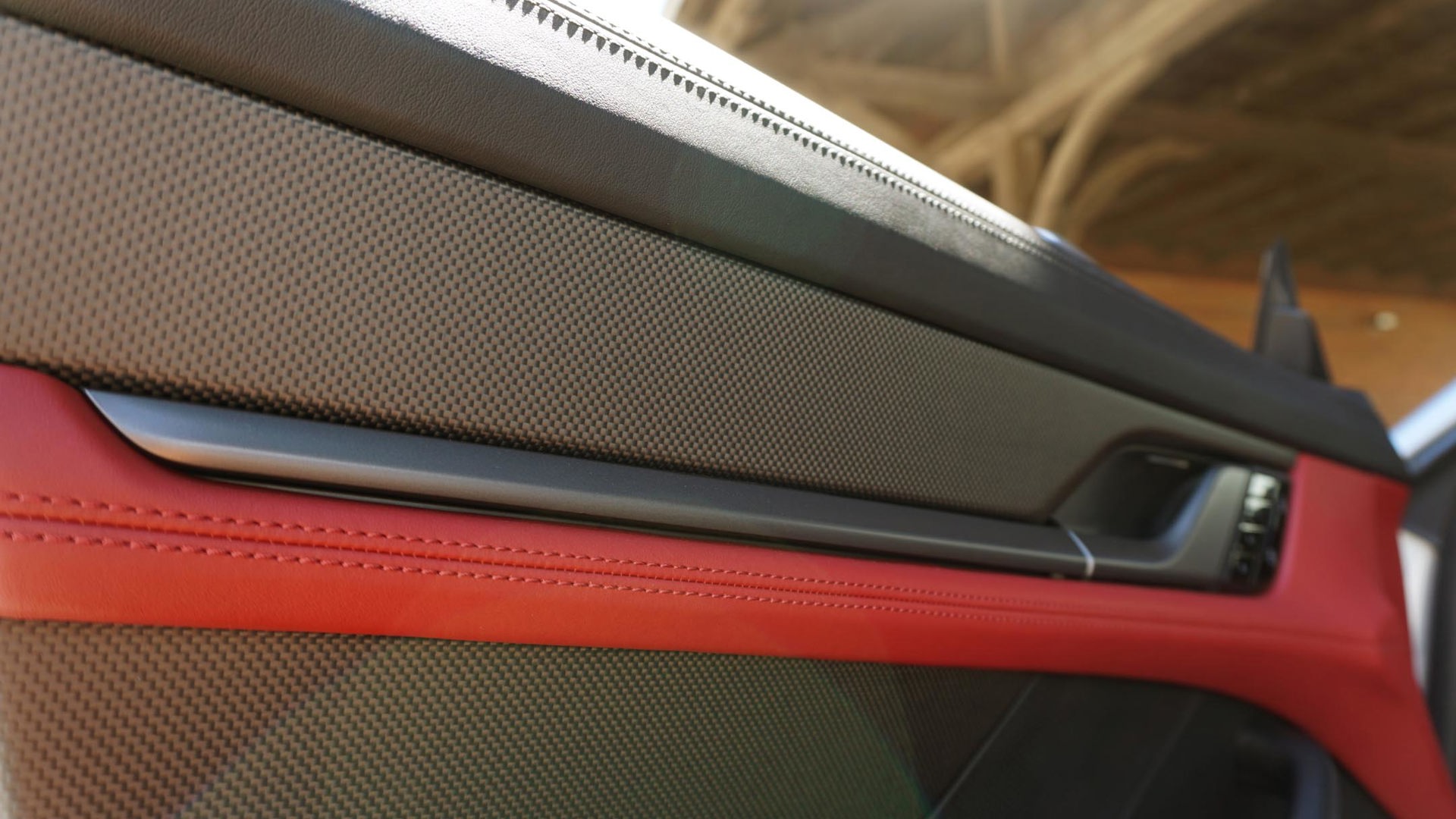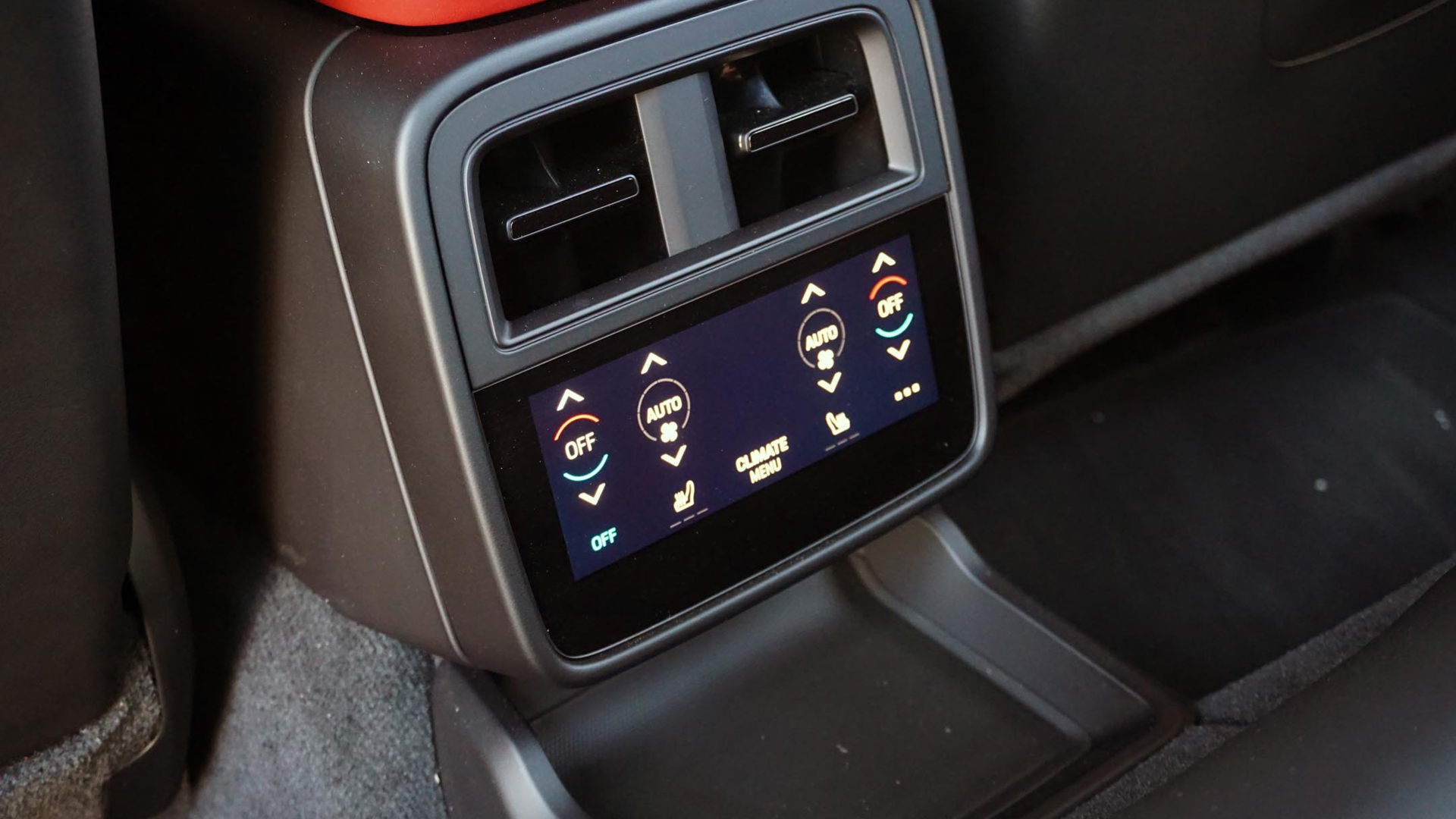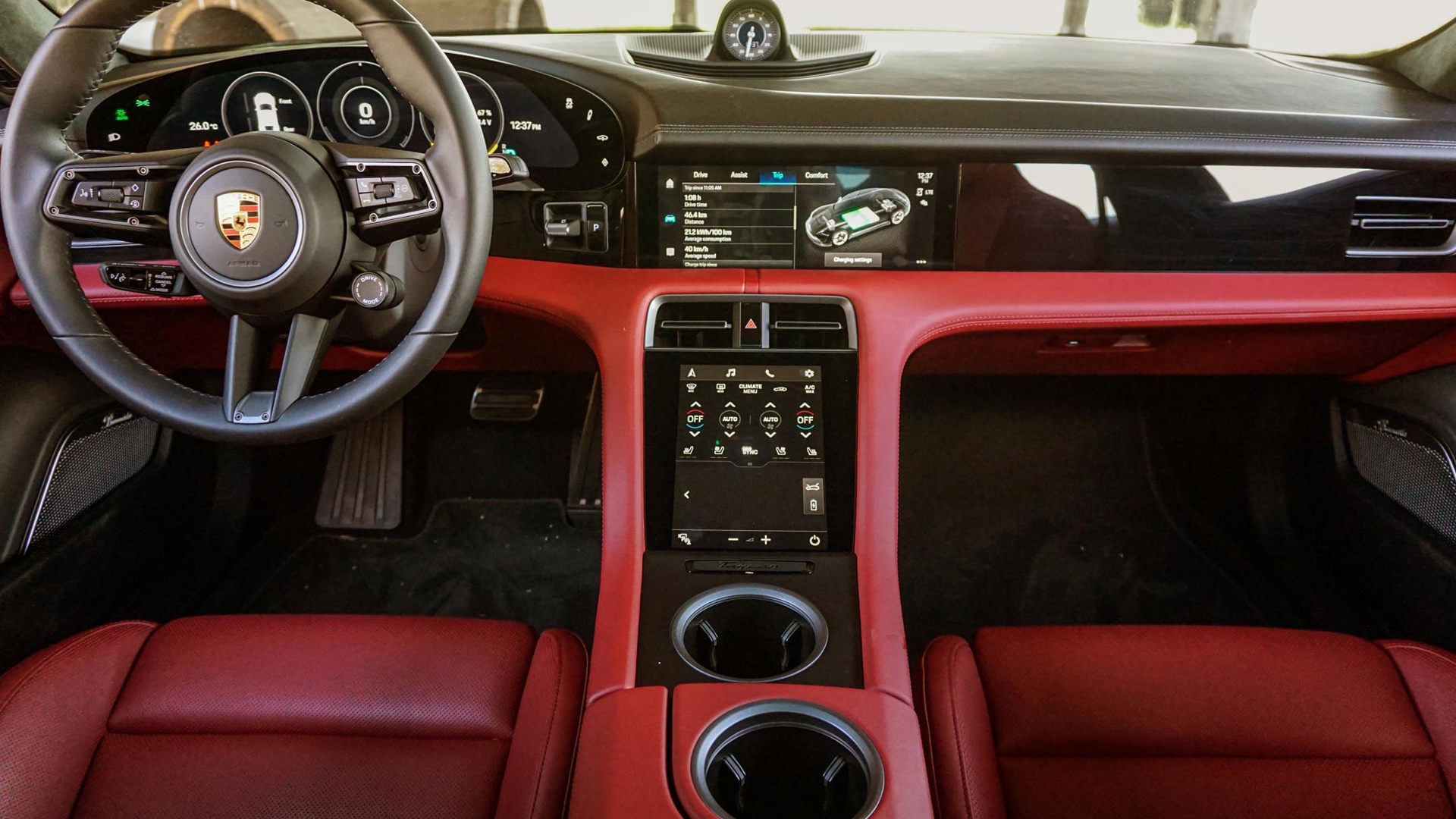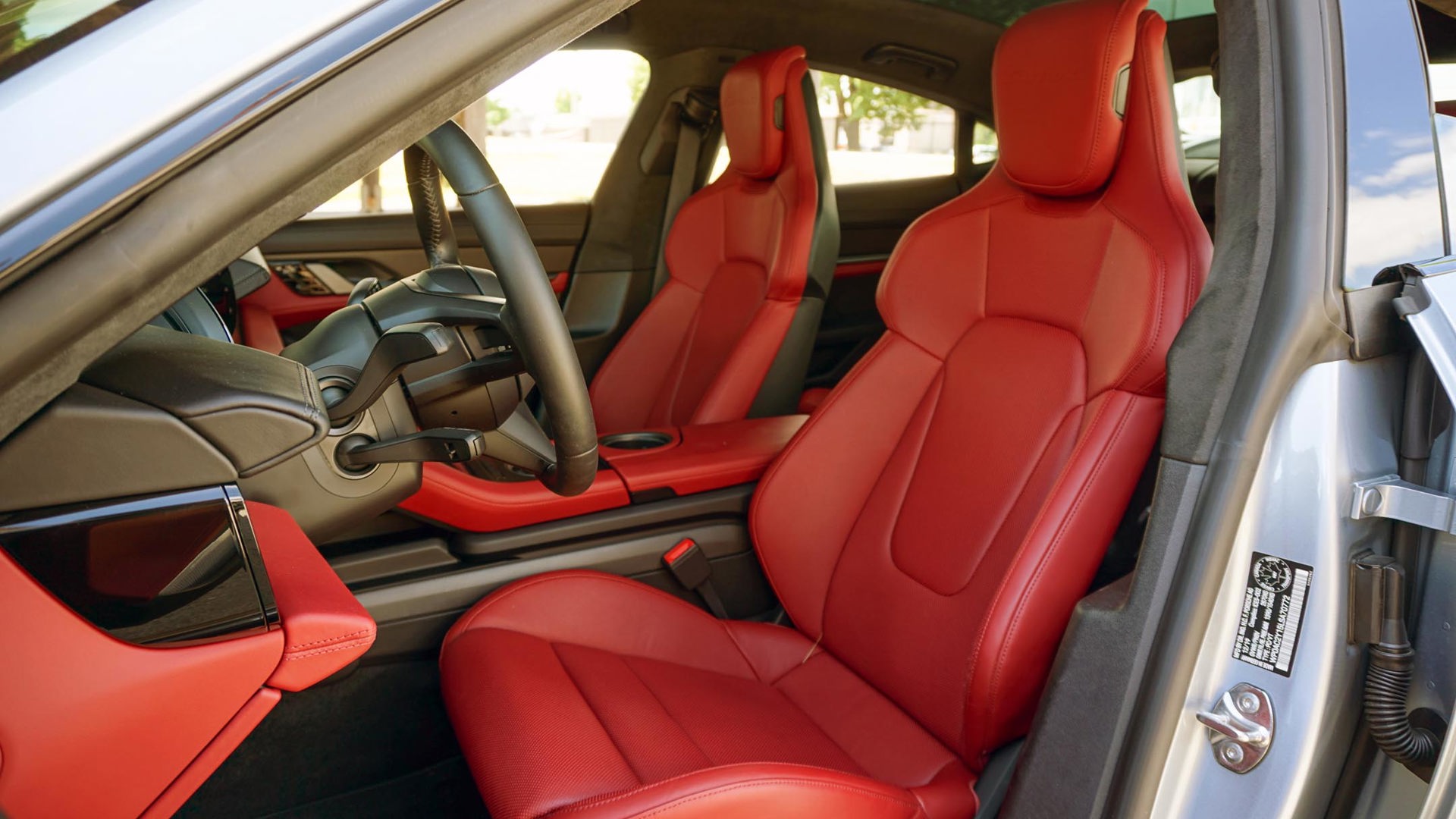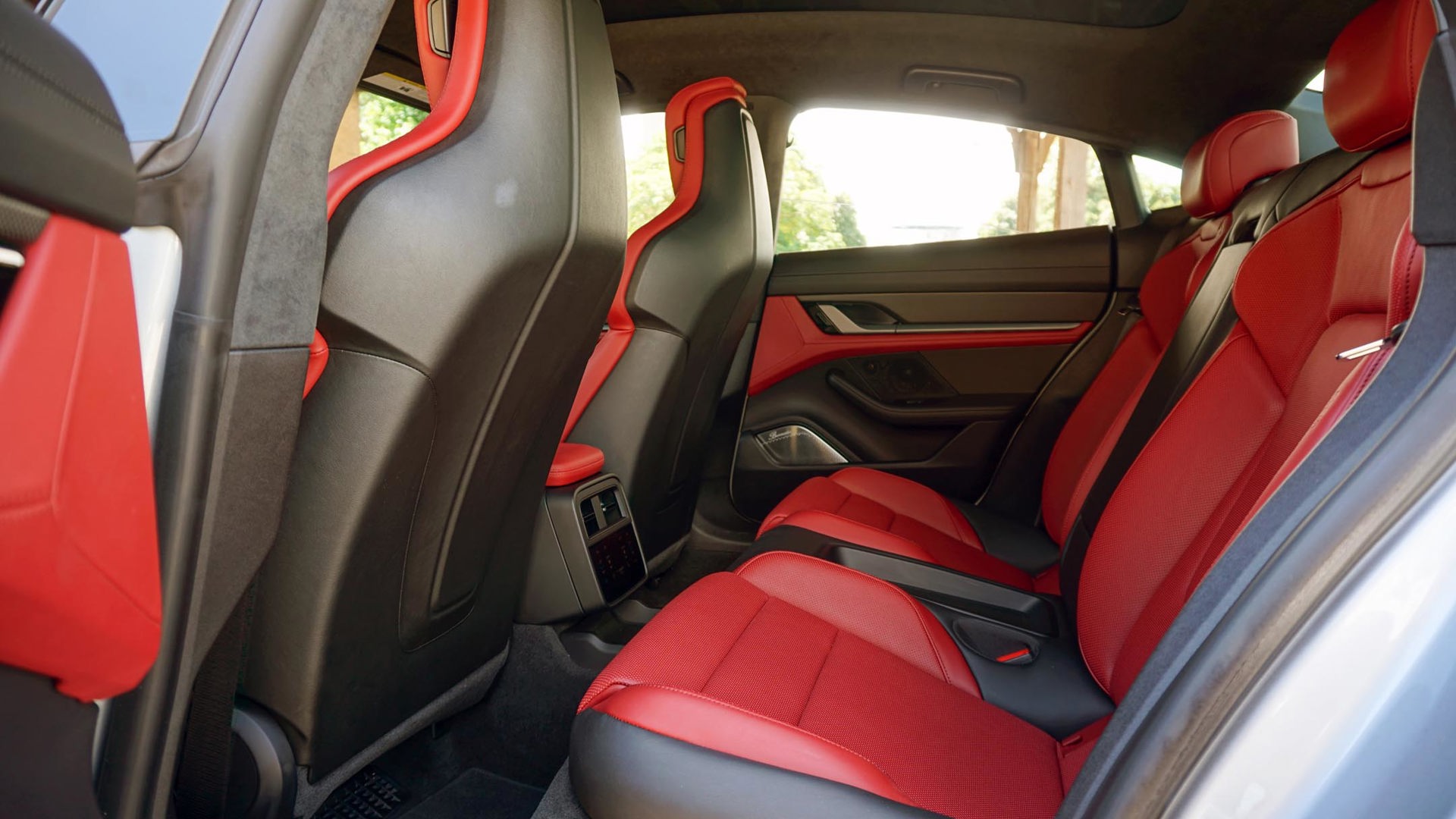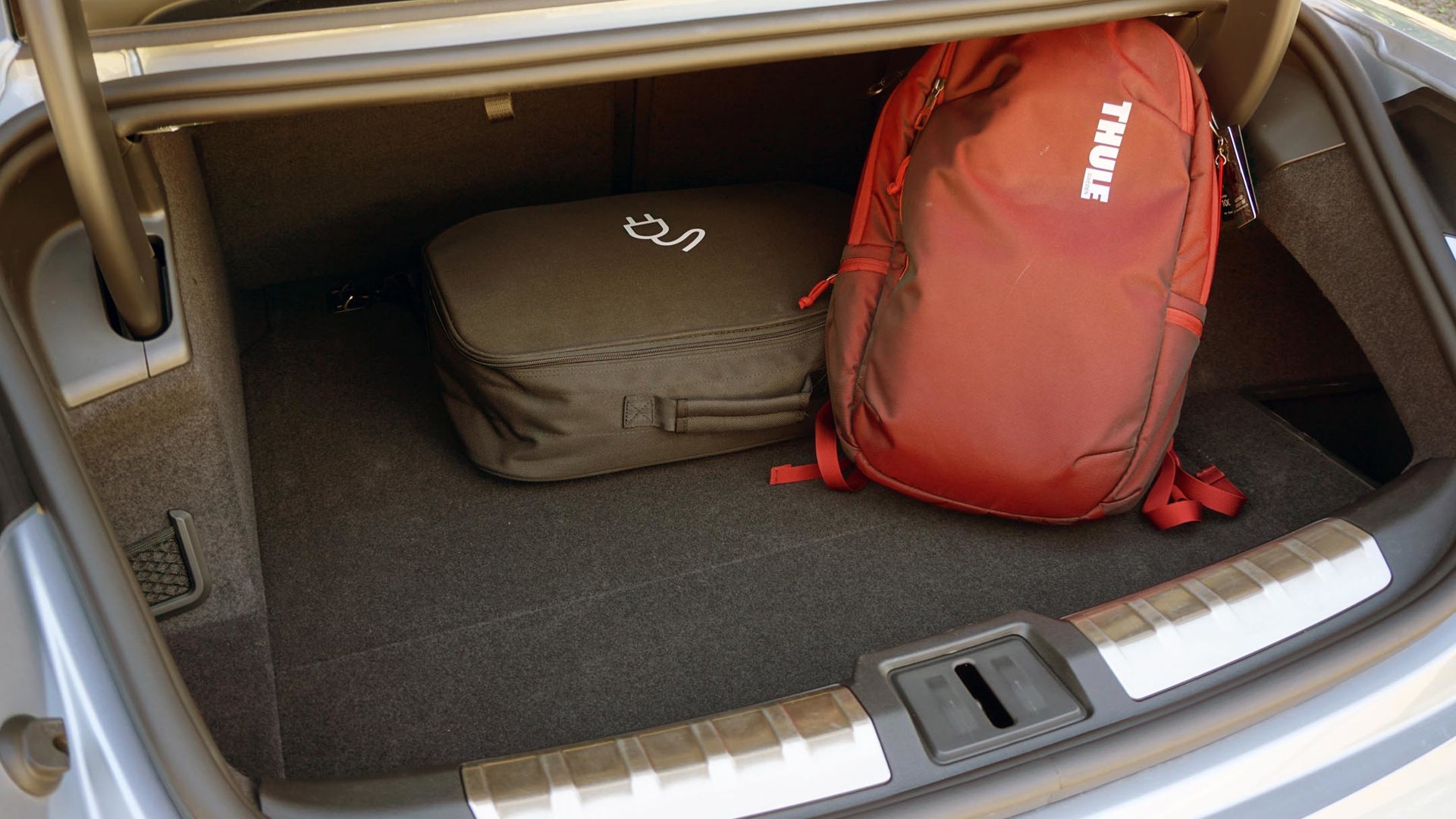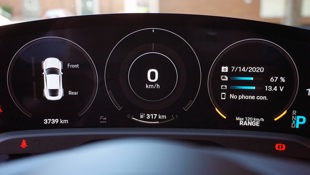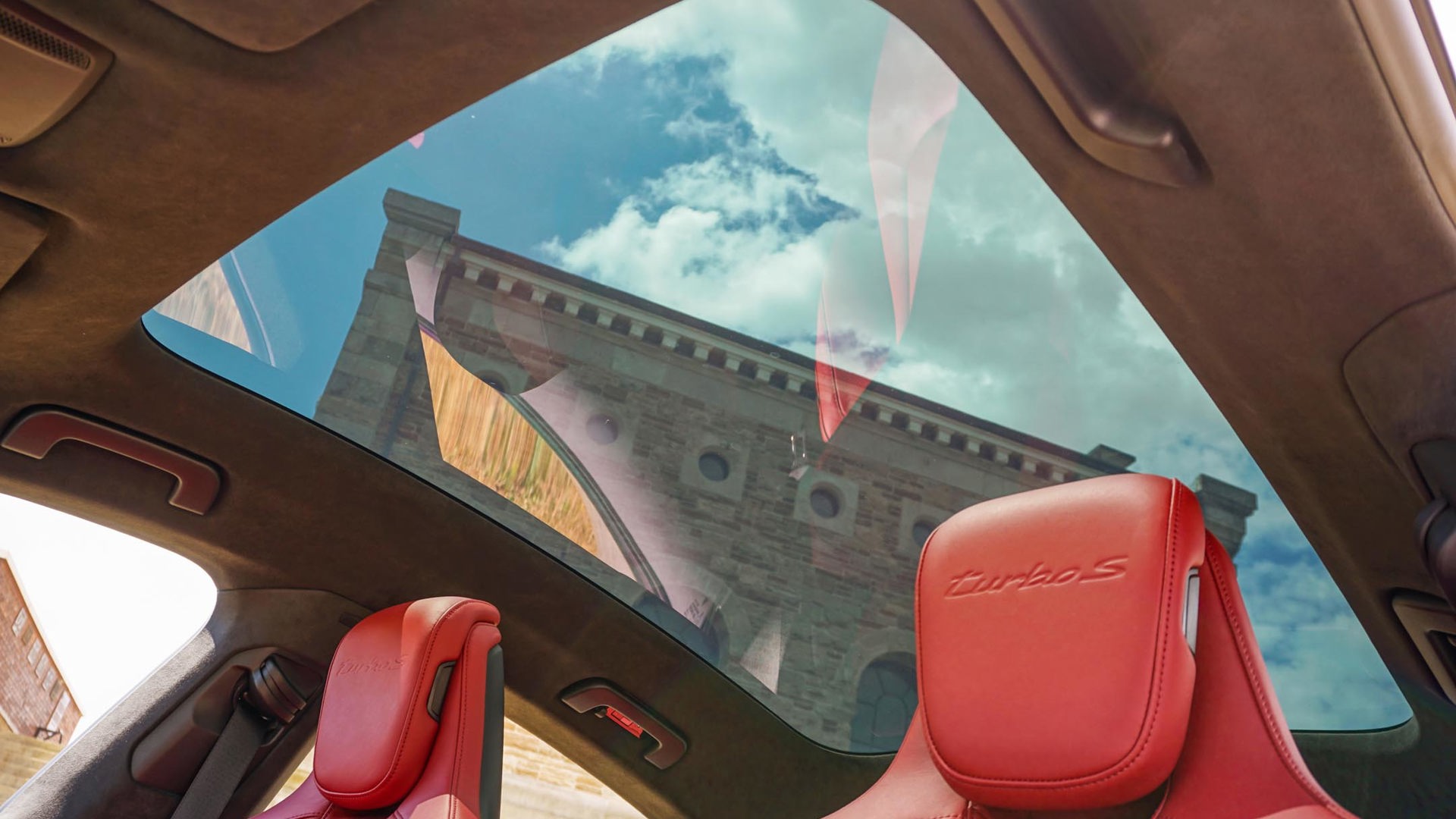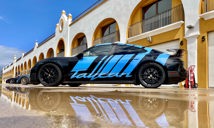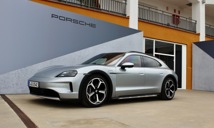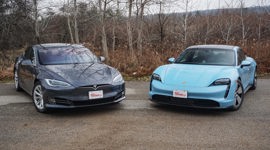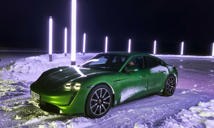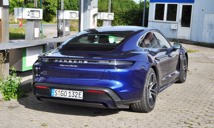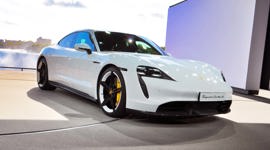 AutoTrader SCORE
AutoTrader SCORE
-
STYLING10/10
-
Safety9/10
-
PRACTICALITY8/10
-
USER-FRIENDLINESS8/10
-
FEATURES8/10
-
POWER10/10
-
COMFORT10/10
-
DRIVING FEEL10/10
-
FUEL ECONOMY9/10
-
VALUE9/10
Tempting though it may be to compare the 2020 Porsche Taycan to the Tesla Model S, the parallels are actually rather few and far between.
Sure, both are lightning-fast four-doors. Each also happens to run on nothing more than electrons. But that’s about where the similarities end. Because at the end of the day this is a Porsche, and that badge represents something special.
It goes beyond predicted reliability and tight panel gaps, too. There’s a pedigree here, and the Taycan is simply a continuation of it. It’s the reason the car’s power button is to the left of the steering wheel – a nod to Porsche’s years racing at Le Mans. Or why the connection to what the car is doing feels so organic, even in an electric car. It may be delivered differently but rest assured: this is still the Porsche experience, just evolved.
Driving Feel: 10/10
Fear not, Porsche faithful, the days of flat-sixes are far from over. But as the brand prepares for the future, it’s still firmly rooted in what got it to this point in the first place. Sedans and SUVs may keep the lights on in Stuttgart these days, but sports cars are still what Porsche prides itself on. And more so than the Panamera before it, the Taycan truly is a sports car that happens to have two extra doors.
It may look like a stretched out 911, but the Taycan feels far closer to a 718 Cayman based on balance alone. Credit goes to the compact powertrain, with all the heavy electrical bits confined between the Taycan’s wheels. There’s a battery pack that spans the entire cabin floor – it’s split into 33 modules made up of 12 cells each – bookended by separate electric motors and transmissions wedged inside the front and rear axles, respectively.
With its standard rear-wheel steering, the Taycan Turbo S manages to feel smaller than its Panamera-like dimensions might suggest. Traction is always at the ready thanks to the electrified all-wheel drive, the Taycan carving a tight line through corners that at first blush look like they should be problematic for a car this size. It’s simply so precise.
The body barely stirs as the 2,295-kg (5,060-lb) electric car slices its way through ribbons of winding road, with tons of technology at work to optimize the ride. There’s air suspension at all four corners, with Porsche’s sensor-based suspension management system doing the heavy lifting. There’s also a network of sensors monitoring chassis movement and adjusting accordingly – a system enhanced by the addition of optional electromechanical anti-roll bars in this tester.
Like everything else about the car, the steering is electric yet it feels unmistakably like a Porsche, past or present. Grip the right-sized wheel and there’s the kind of communication that doesn’t come along every day. Changes of direction, too, are as rare as they are fast, the Taycan darting around like a water bug on the surface of a still lake – again, a by-product of the rear-wheel steering.
Power: 10/10
Of course, everything happens quickly with this kind of electric powertrain along for the ride. It’s not just the output – though there’s plenty of that to go around – or the car’s balance that allows it to surge around the streets like a slot car. The Taycan’s 800-volt electrical system is twice that of the average EV, resulting in faster charging times and less weight, but also consistent, repeatable performance.
Helping transfer the electrified power to the road so quickly is a unique setup that pairs the rear electric motor with a two-speed transmission. While somewhat unconventional for an EV, it allows the Taycan to pull double duty: one gear for fast, effortless launches that pin occupants to their seatbacks like magnets to a fridge; the other for efficient cruising.
With the drive mode dial spun to Sport Plus and launch control activated – it’s incredibly easy to engage the system; simply hold the brake and accelerator pedals simultaneously – the Taycan Turbo S is ready to unleash all its electrified fury. Overboost piles on an outrageous 750 hp and 774 lb-ft of torque, allowing the car to sprint to 100 km/h in a claimed 2.8 seconds. Crudely timed numbers weren’t far off that mark during testing following a rainstorm – impressive given the slick asphalt beneath the Taycan’s 265-mm front and 305-mm rear tires.
Fuel Economy: 9/10
As easy and exciting as the Taycan is to drive fast, it’s surprisingly rewarding to pilot with a more relaxed demeanour. Without any audible encouragement from a raucous exhaust or engine bay, maximizing how far the car can travel between charges adds another element of enjoyment to the experience. While Porsche advertises a driving range of about 310 km for the Turbo S, it’s the classic undersell, with little effort required to exceed that estimate by a large margin.
The easiest way to overachieve here is to spin the drive mode dial to Range, a setting intended to take the Taycan as far as possible between charges. Unlike most efficiency-first modes, however, the Taycan’s does little to impact performance when more power is required; don’t forget, there’s still 616 hp to work with here. Any difference in responsiveness is hardly discernible as the car rockets around under a rush of electrons when called upon, with only the speed limiter spoiling the fun (top speed is capped at anywhere from 90 km/h to 140 km/h in Range mode, though it can be overridden).
Electric power is also shuttled around differently in Range mode, with the car using a rear bias just like the rest of the drive settings during acceleration before switching to front-wheel drive to maintain cruising speed. Normal, Sport, and Sport Plus modes, meanwhile, maintain a rear bias at all times.
After three days of testing and 340 km driven, mostly in Range mode, the Taycan tested was still showing 37 per cent charge remaining and an estimated range of almost 100 km. When it was time to recharge, the 800-volt system was able to draw 100 km of range in just over five minutes plugged into a 350-kW charging station. Another 30 minutes plugged into the charger pushed the charge to a healthy 94 per cent, with 390 km of estimated range showing.
Features: 8/10
A three-year subscription to the Electrify Canada network of charging stations is included in the price of the Taycan, which is how drivers hook up to one of those 350-kW fast-chargers (the Taycan can charge at up to 270 kW). The subscription service includes unlimited 30-minute sessions separated by one hour – reasonable for a quick shopping trip or coffee stop.
There was, however, an issue with inconsistency in the amount of time showing on the mobile phone app versus the charging station itself. During two sessions, charging was stopped via the app after 29 minutes, yet the charging station showed both sessions exceeded the allotted free 30 minutes, resulting in incremental usage charges.
The network itself is also rather limited at the moment. While there are plans to have 32 stations up and running across the country by the end of 2020, only six were operational at the time of this writing – five in Ontario, and one in British Columbia.
Whether using a fast charger or a standard household outlet, plugging the Taycan in is as easy as it gets: open the charging port door on either front fender – the passenger side is fast-charge capable – and plug in the cord. Settings can be changed and monitored through the infotainment system or a companion app that provides access to state of charge, range, and other information on the go.
User Friendliness: 8/10
The technology inside isn’t quite as straightforward, with some adjustment time required. Being the brand’s tech showcase, there’s a lot going on. Physical controls are limited to the switchgear on the steering wheel, the gear selector, and buttons for the hazards and to shut the car off – everything else is operated through touch controls.
The digital gauge cluster is flanked by capacitive touch buttons for lighting and chassis-related functions. Mounted atop the centre stack is a conventional touchscreen for infotainment interfacing, while a second screen sits below that in place of physical HVAC controls (there’s a similar screen mounted on the backside of the centre console for climate functions). Mastering the climate control system, meanwhile, requires a PhD in patience, the direction of airflow controlled digitally rather than through adjustable vents.
Comfort: 10/10
Leaving the A/C in Eco mode does a fine job of keeping occupants cool and comfortable, as do the optional ventilated front seats (that ventilation isn’t standard in a six-figure car is something of a head-scratcher). Beyond their climate capabilities, the seats themselves are among the most comfortable on the market, providing cozy confines that are sure to remain supportive during the longest drives the Taycan’s battery will allow.
There are slightly less bolstered seats available as a no-cost swap, dropping front adjustability from 18 ways to 14, though the former are recommended for those with even the broadest builds. Contoured well enough to keep occupants from sliding around without grabbing too tight around the love handles or shoulders, they pay dividends when the turns get twisty.
The suspension, too, is more than capable of making quick work of apexes, but it’s equally adept at withstanding the rigours of the daily drive. The multi-chamber air springs are simply sublime, gobbling up the deepest ruts in the road without disrupting the ride quality.
Safety: 9/10
Slogging along through traffic isn’t exactly any Porsche’s specialty, but the Taycan can be fitted with plenty of commuter-friendly features, including the brand’s InnoDrive system. Essentially a glorified adaptive cruise control, it uses navigation, radar, and camera information to monitor changes in elevation and corner radius and automatically adjusts the vehicle’s speed accordingly. That’s in addition to the normal adaptive cruise control that can speed up and slow down with the flow of traffic.
Styling: 10/10
Expect the Taycan to turn plenty of heads in traffic for its futuristic design alone, let alone its rarity on the roads. Porsche’s styling team pulled off the impossible, with the Taycan’s final design nearly indistinguishable from the beautiful Mission E concept on which it’s based. From the bulging fenders front and rear to the swept-back roofline, the Taycan is every bit the electric 911 look-alike it’s supposed to be. Inside, the red leather upholstery provides an air of excitement that the various black, grey, and brown hues offered simply can’t.
Practicality: 8/10
That the Taycan is like a sports car with two extra doors means it’s actually pretty practical. While the cargo compartment up front is pretty tiny, the trunk is big enough to fit a couple of smaller suitcases – even with the optional 150-kW portable charger along for the ride – while the rear seats mean up to four people can enjoy the serene speed of Porsche’s first all-electric endeavour.
Value: 9/10
It’s all but impossible to judge the value of a car carrying this kind of price tag, let alone one as unique as the Taycan Turbo S. Sure, there’s the Tesla Model S, but again, it’s a vastly different car. A 911 Turbo S, with its $231,700 price tag, looks pretty pedestrian next to the Taycan Turbo S, while the Panamera Turbo S E-Hybrid starts at $214,600. Against those Porsche compatriots, the top of the Taycan lineup rings in at a relatively reasonable $213,900. Even the tester seen here that’s decked out with options that push its pre-tax price to almost $240,000 remains competitive with those cars, with the added bonus of purely emissions-free driving.
There are, of course, cheaper versions of the Taycan. The Turbo starts at $173,900, while the 4S is priced at $119,400. Neither quite have the performance chops of the Turbo S, mind you, but both deliver the same stunning looks and similar driving range.
The Verdict
The same way the Porsche Panamera doesn’t quite line up with the Mercedes-Benz S-Class, the Porsche Taycan and Tesla Model S occupy different corners of the same space. Looking past their limited similarities reveals a car that might just be Porsche’s best to date. It doesn’t deliver the same kind of experience as the 911, no, yet the Taycan is still a purebred Porsche through and through. If this is the brand’s future, bring it on.
| Engine Displacement | 170 kW |
|---|---|
| Engine Cylinders | n/a |
| Peak Horsepower | 616 hp; 750 hp w/Launch Control Overboost |
| Peak Torque | 774 lb-ft |
| Fuel Economy | 2.5/3.3/3.4 Le/100 km cty/hwy/cmb (30.9/29.5/30.2 kWh/100 km cty/hwy/cmb) |
| Cargo Space | 81 / 366 L front/rear |
| Model Tested | 2020 Porsche Taycan Turbo S |
| Base Price | $213,900 |
| A/C Tax | $100 |
| Destination Fee | $1,500 |
| Price as Tested | $238,910 |
|
Optional Equipment
$23,410 – Burmester Surround Sound Stereo, $6,620; Premium Package, $4,960; InnoDrive w/Adaptive Cruise Control, $4,110; Porsche Dynamic Chassis Control Sport, $4,090; Mobile Charger Connect, $1,270; Advanced Climate Control, $1,130; Onboard 150-kW Charger, $520; Electric Folding Mirrors, $370; Porsche Intelligent Range Manager, $340
|
|
